The Corne¬ Daily Sun
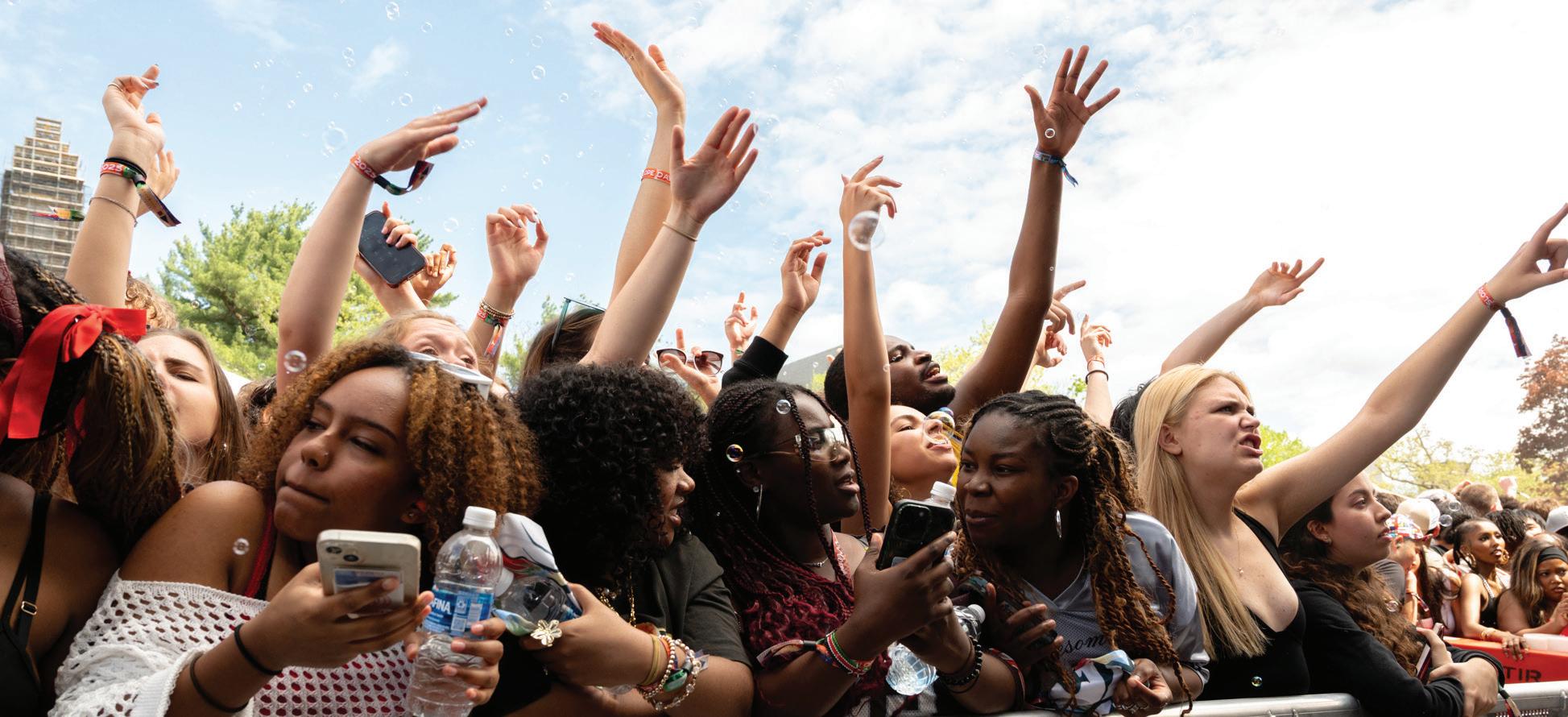
Kotlikof Rescinds Kehlani Invite
This story was originally published on April 23.
After revealing to a group of about 70 concerned students at a town-hall style meeting on Tuesday afternoon that a decision regarding Slope Day would be made “within 24 hours,” President Michael Kotlikoff announced that Kehlani’s invitation to perform at the annual performance was rescinded in an email to the student body on Wednesday morning.
In the email, Kotlikoff wrote that it was not the intention for Kehlani’s
slope day performance to have “injected division and discord into Slope Day.”
“For that reason, I am rescinding Kehlani’s invitation and expect a new lineup for a great 2025 Slope Day to be announced shortly,” Kotlikoff wrote.
This decision comes amid a funding freeze of over $1 billion in federal contracts and over 90 stop-work orders sent to the University. A Trump administration official confirmed that the funding freeze was in connection with ongoing Title VI investigations.
Cornell, along with 59 other universities, was warned on March 10 by the U.S. Department of Education to
address antisemitism on their campuses. The ED statement specified that the letters were addressed to educational institutions with ongoing investigations for Title VI violations related to antisemitic harassment and discrimination.
Kehlani was announced on April 10 as the headliner for Slope Day, the annual campus-sponsored concert on Libe Slope following the last day of classes. Following the announcement, dissatisfaction surfaced as students and parents learned of the artist’s anti-Israel rhetoric and social media presence.
See KEHLANI page 6
‘A Monumental Blunder’: Multi-Million Dollar Donor Bafed as Namesake Destroyed
By ZEINAB
This story was originally published on February 26.
“Well, I’ll be a lot more cautious about my donations,” Marsha Dodson ’75 told The Sun.
When she discovered that the University razed the field hockey turf named after her in November 2024, Dodson was both baffled and furious. For one, she only learned that her namesake field had been destroyed after an alumnus — not the University — broke the news to her, she said.
But the real sticking point for Dodson — a former Cornell student-athlete who said that she has donated more than $1 million to Cornell Athletics — was that Marsha Dodson Field was destroyed with no regulation turf for the women’s team to use for the 2025-2026 athletic season, except one more than 50 miles away in Syracuse.
“I was incredibly angry and disap-
pointed when I found out,” Dodson said, describing the ordeal as “a monumental blunder” on Cornell Athletics’ part. “They took the field up before they had a new place for the team to play, so I was really, really angry, and I went on a warpath. It was just plain dumb.”
Cornell had planned to relocate the field hockey team to a new location at Game Farm Road. However, the move has been set back. The delay in construction follows a series of complaints about environmental concerns from Ithaca residents over the proposed field’s use of synthetic turf.
What irked Dodson especially was the lack of communication from Cornell Athletics, she said, blaming Director of Athletics Nicki Moore for the mishap.
“If the previous athletic director, Andy Noel, was still there, I would have gotten a call, and I would have been included [in conversations about the move],” Dodson said.
This story was originally published on March 21.
After serving eight months as interim president, Michael Kotlikoff has been named Cornell’s 15th president in a vote by the Cornell Board of Trustees on Friday.
This appointment is effective immediately, according to an email sent out to the Cornell community from Board of Trustees chair Kraig H. Kayser MBA ’84 and incoming chair Anne Meinig Smalling ’87.
Kotlikoff was named interim president on May 9, 2024, following former president Martha Pollack’s announcement of retirement. He was slated to serve two years as interim president, with a search committee intended to select the next president six to nine months prior to the end of Kotlikoff’s term.
In June 2024, Kotlikoff announced a search committee for the selection of his replacement as provost that included “a very broad swath of folks to participate, from across colleges, constituencies and academic disciplines, as well as undergraduate and graduate student representation.” The committee invited the Cornell community to provide their input on the selection through an online survey as well as a confidential mailbox.
However, there was no public announcement of the selection process for president — which took place significantly earlier than scheduled — nor was an official committee or community input system named.

In Photos
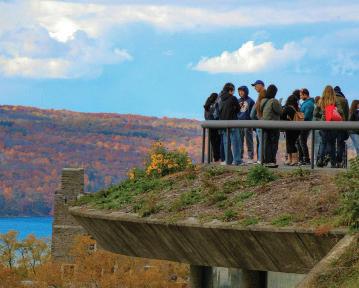
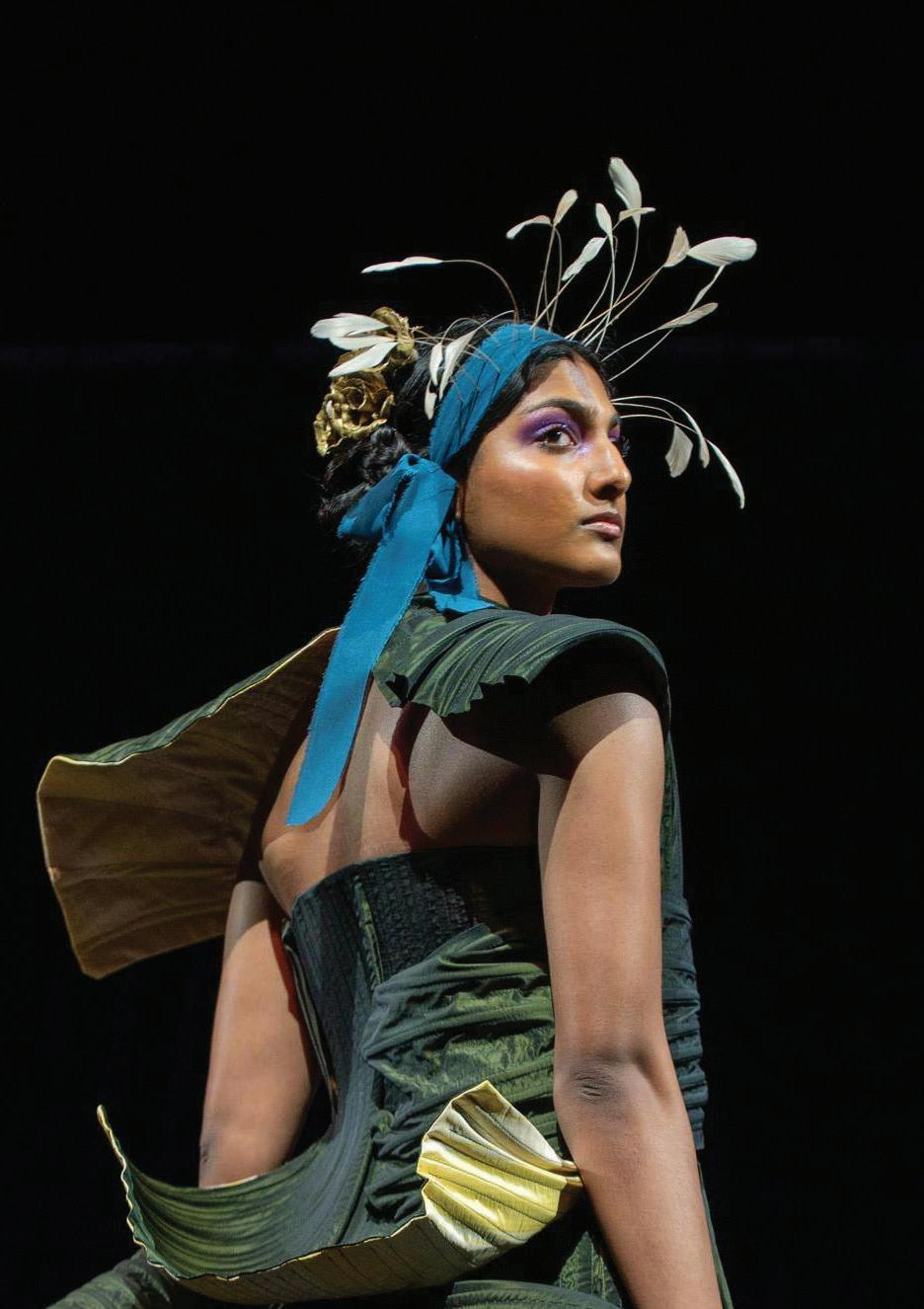
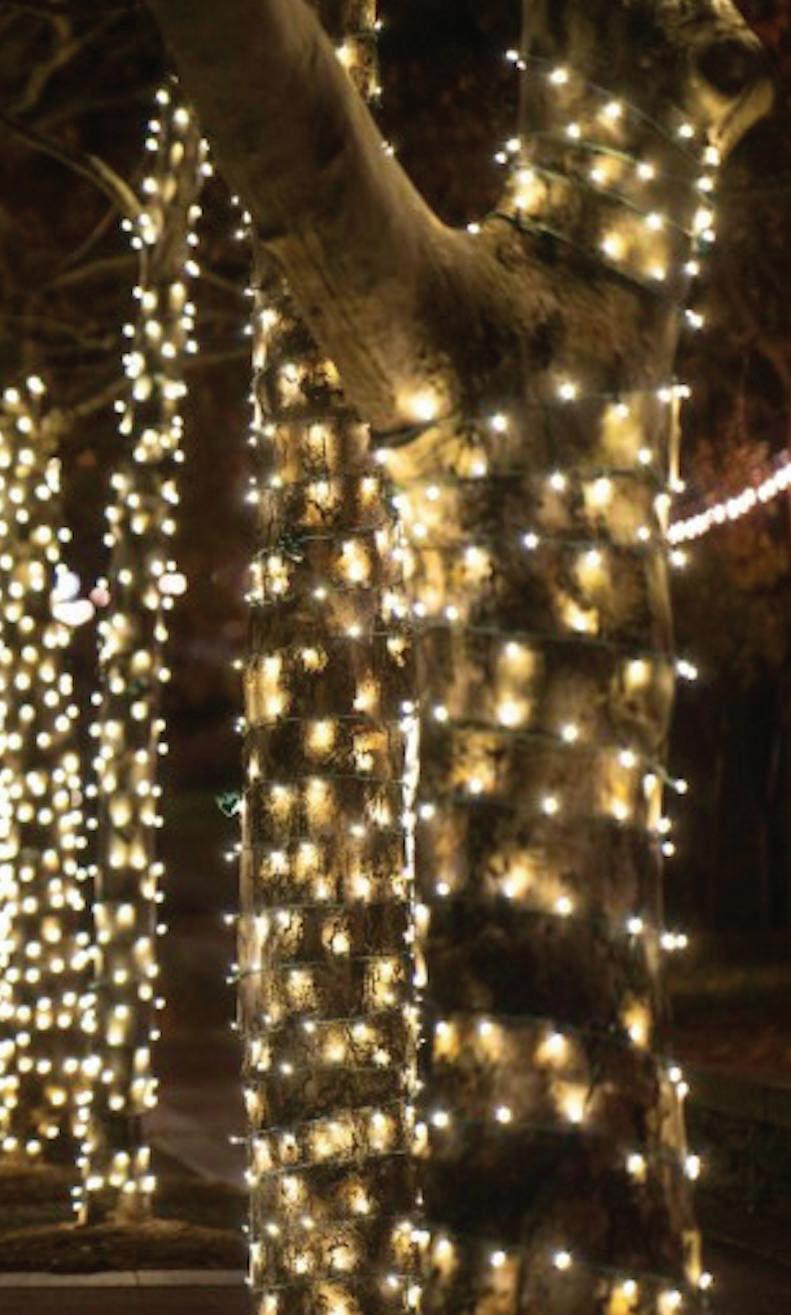
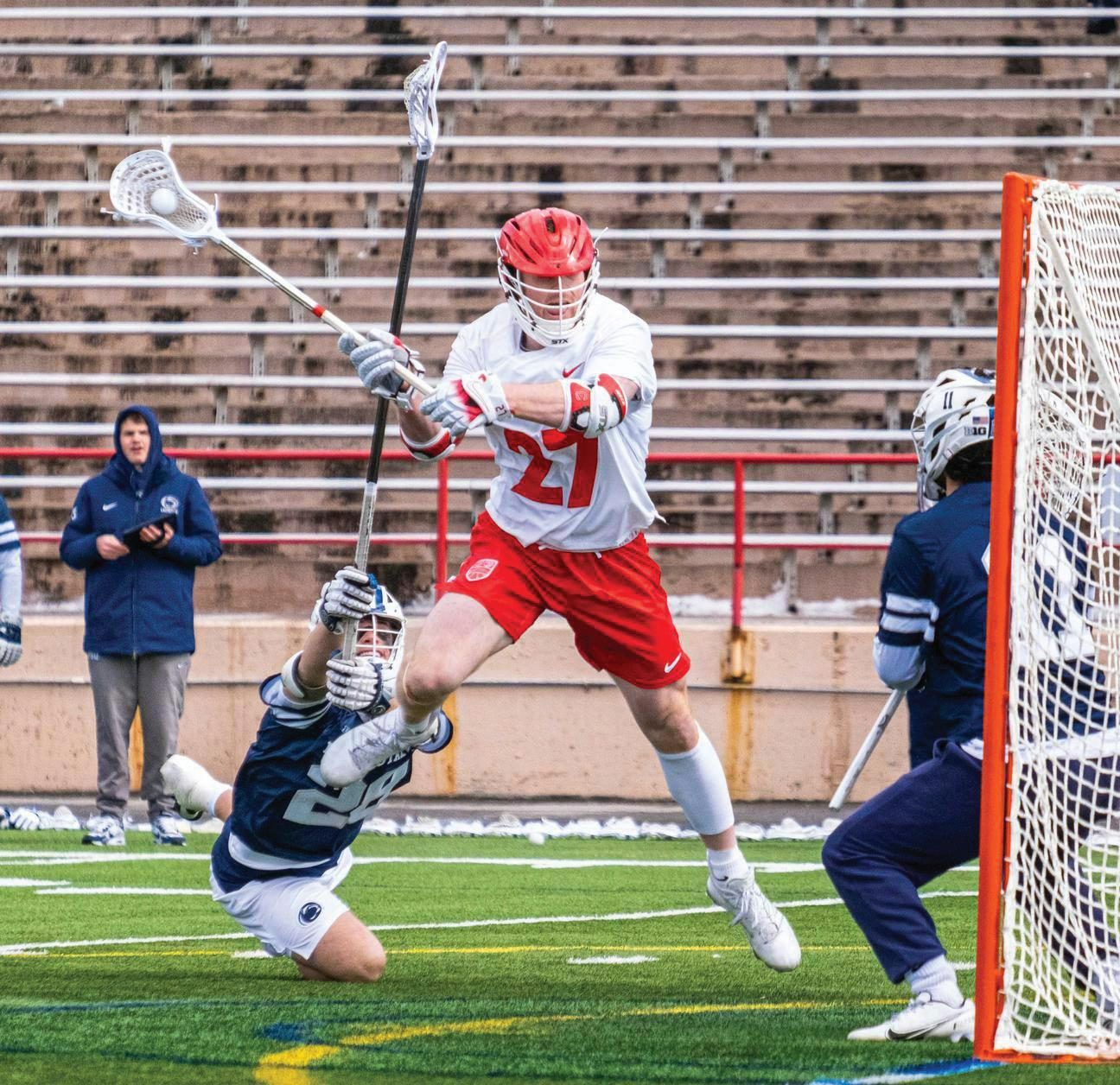
VOTE! | As early at 5 a.m., students were out on Ho Plaza chalking, placing signs and reminding students to vote on Election Day.
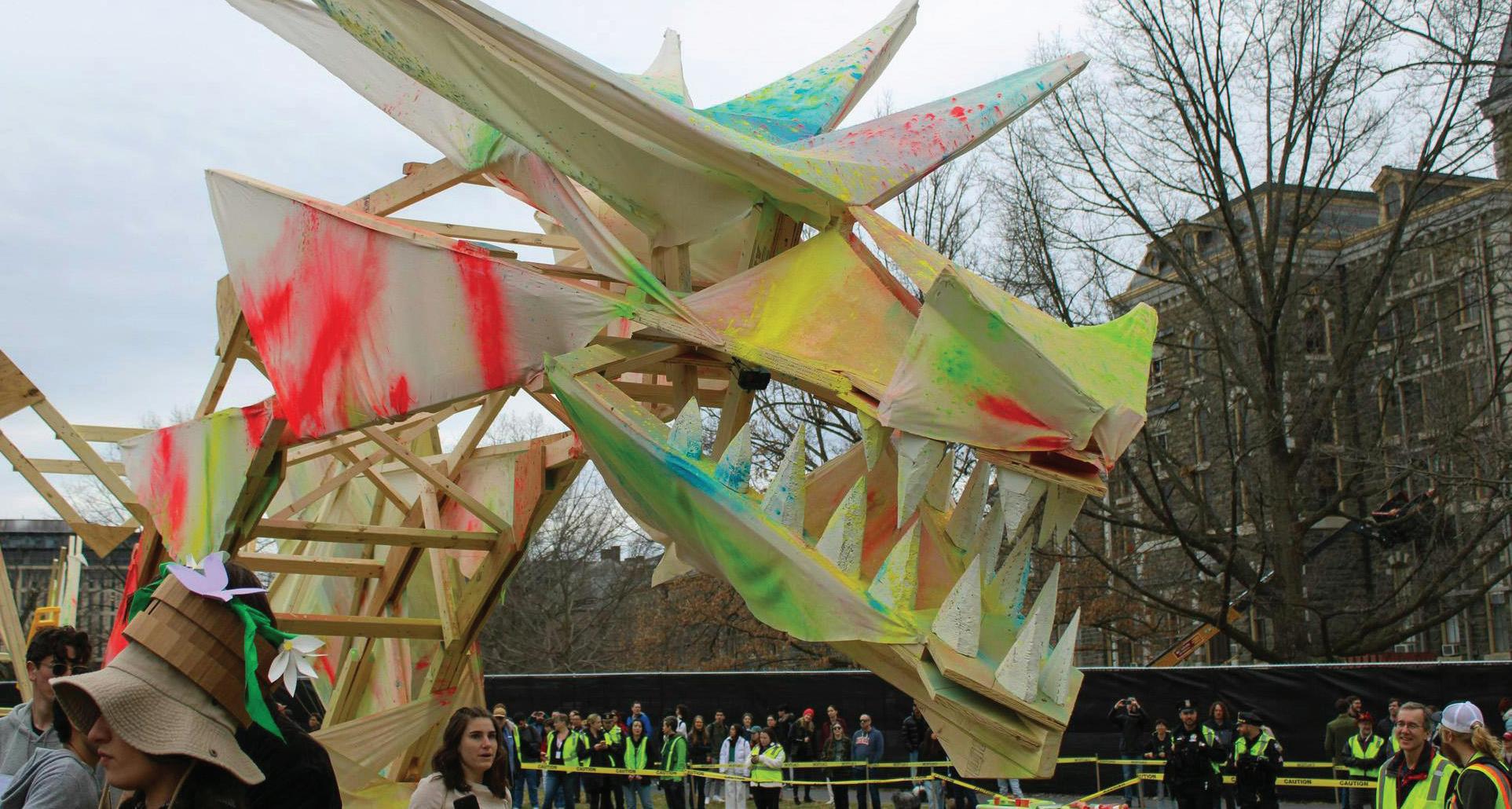
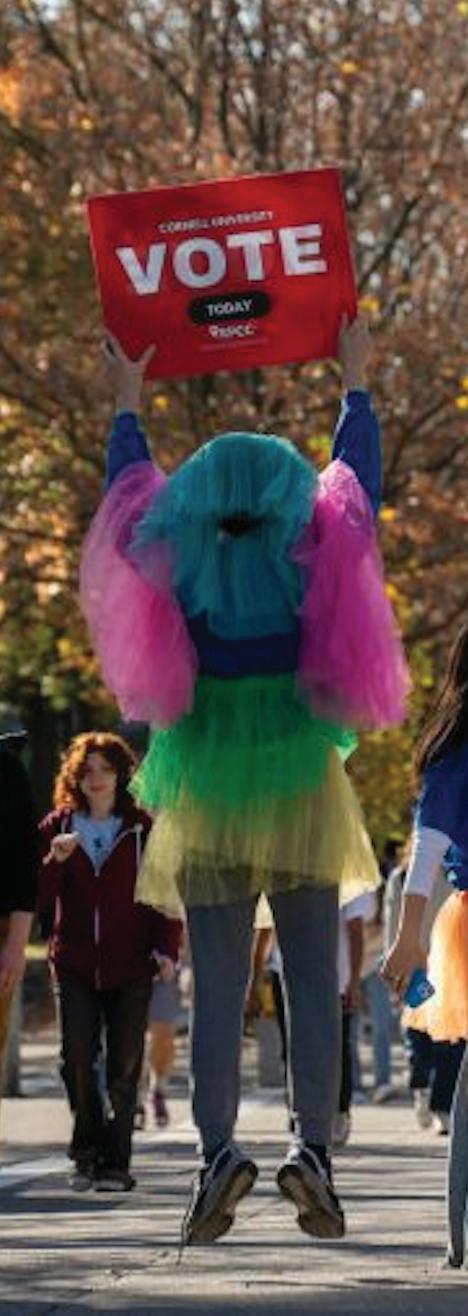
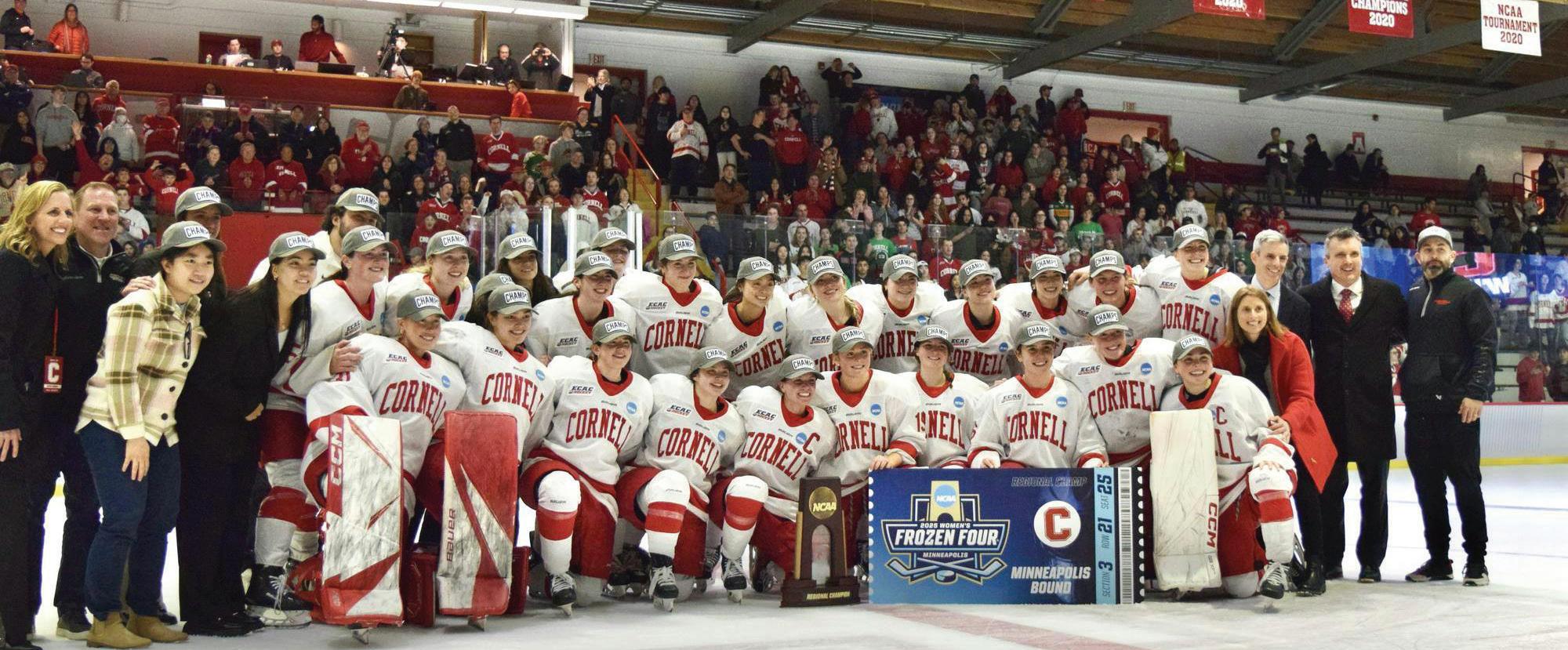
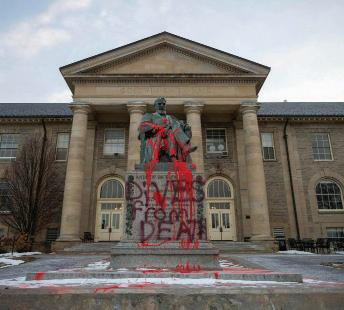
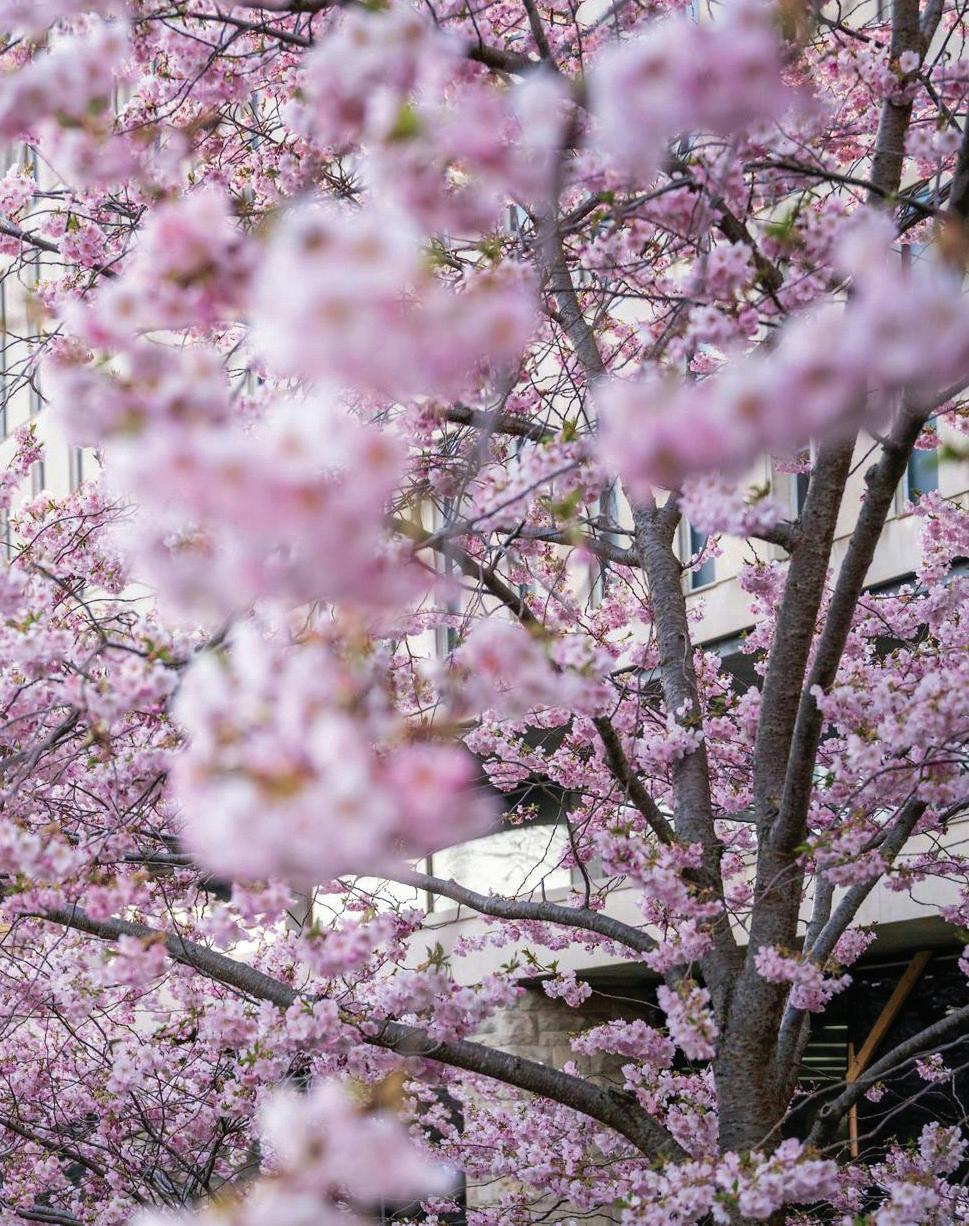
Thursday Friday Saturday Sunday
Exhibit: Libe Gets a New Hat
8 a.m. - 5 p.m., Uris Gallery Level
General Campus Tour
10:30 - 11:45 a.m., Martin T. Yang Welcome Center
Reunion Infomation Center
2 - 6 p.m., RPCC and Statler Hall
Tour: Beebe Lake Natural History
Walk
2 - 3:30 p.m., Tang Welcome Center
Savage Club Show
8 - 10:30 p.m., Alice Statler Auditorium, Statler Hall
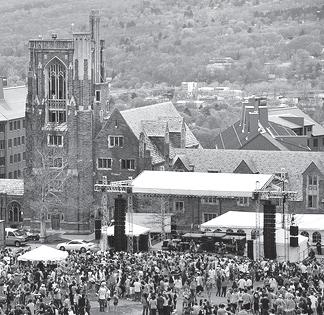
Reunion Issue Staff
Dorothy France-Miller ’27
Toni Morrison Breakfast
7 - 10:30 a.m., Toni Morrison Dining Hall, North Campus
Campus Bus Tour
9 - 9:45 a.m., Uris Hall
Rock Climbing
9 a.m. - noon, Lindseth Climbing Center, 554 Campus Rd.
Canoeing
10 a.m. - 5 p.m., Beebe Beach
CU for Lunch
11:30 a.m. - 2 p.m., Terrace Resturant, Statler Hotel
Historical Campus Tour
Noon - 12:50 p.m., Martin Y. Tang Welcome Center
Cascadilla Gorge Hike
1 - 2:30 p.m., College Avenue entrance to trail near Schwartz Center
Reunion Service of Remembrance and Thanksgiving
1:30 p.m. - 2:30 p.m., Sage Chapel
Going for Gold: Big Red Olympians
3 - 4 p.m., Bailey Hall
Tent Parties
9 p.m. - 1 a.m., Arts Quad
Reunion 5K Run
8 a.m., F.R. Newman Arboretum
Breakfast at the Library
8:30 - 9:30 a.m., Amit Bhatia Cafe
Cornell Fashion & Design Student Expo
9 a.m. - 4 p.m., Jill Stuart Gallery
State of the University Address with President Michael Kotlikoff 10:30 - 11:30 a.m., Bailey Hall
CU for Lunch
11:30 a.m. - 2 p.m., Terrace Resturant
“Fun in the Sun” Family Festival 1:30 - 3:30 p.m., Arts Quad
Movie Trailers and Mocktails at Cornell Cinema
2 - 4 p.m., Cornell Cinema, Willard Straight Hall
Cornell Daily Sun Alumni Reunion
2 - 4 p.m., 413 Art Gallery, Willard Straight Hall
Tent Parties
9 p.m. - 1 a.m., Arts Quad
Reception and Tour of Cornell Daily Sun Building
4:30 - 6:30 p.m., 139 W. State St.
Redstock
8:45 - 11:45 p.m., Rhodes-Rawlings

Tour of new Chabad Center
9 - 9:45 a.m., 10 - 10:45 a.m., 11 - 11:45 a.m. and noon - 12:45 p.m., Chabad Cornell
Guided Nautral History Hike to Taughannock Falls
1 - 3 p.m., Taughannock Falls Gorge Trail parking lot
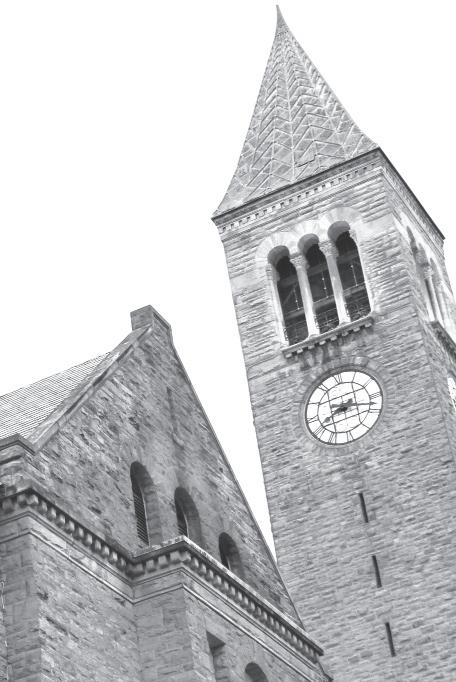
This is just a sampling of the events occurring on campus this weekend. For a more detailed schedule, consult your reunion program.

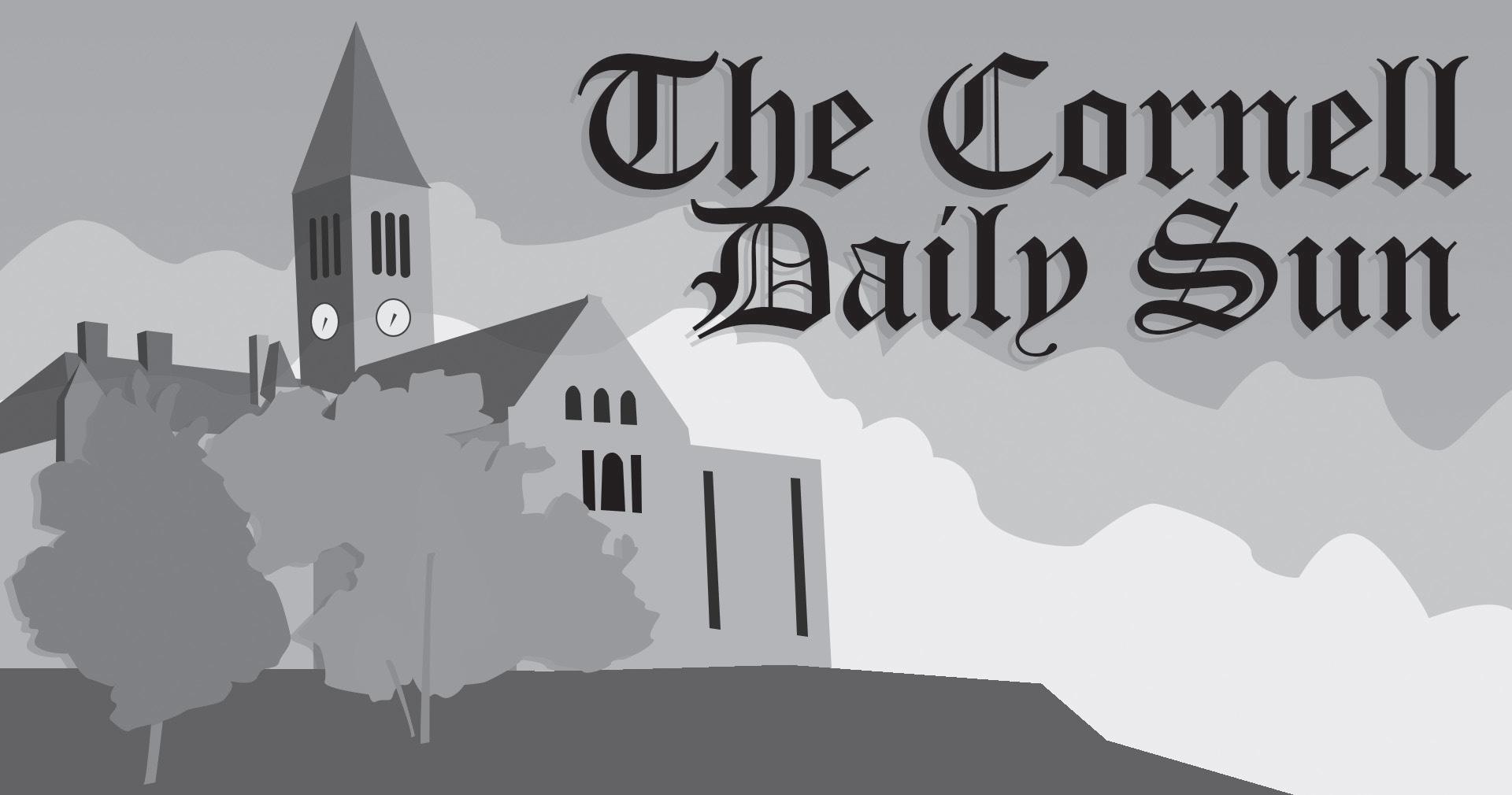
Million-Dollar Donor Bafed
DONOR
Continued from page 1
Moore declined to comment on Dodson’s accusation that the University “messed up” the field-change process.
“Marsha Dodson has long championed women’s athletics at Cornell, and we’re grateful for all she does for her alma mater,” Moore wrote in an email statement to The Sun, adding that the “new Cornell field hockey facility will be among the very best in the Northeast and we look forward to moving the project toward completion.”
In an announcement last month, Moore admitted that she had “made mistakes in not offering adequate communication” about the field change. “I should have shared developments with the field hockey community along the way,” she wrote, “and I should have listened to my project team colleagues when they warned me of growing timeline risks.”
Dodson said she has had “quite a few phone calls” with Interim President Michael Kotlikoff recently as the
University discusses alternatives for the team. The University, she said, has “stepped up to the plate” to cover for what she described as Moore’s “mistake.”
Through a spokesperson, Kotlikoff referred The Sun to Moore’s statement for this article.
Dodson said she has donated to field hockey, women’s tennis and softball because of inequalities in women’s sports at Cornell that she experienced as an undergraduate tennis player in the ’70s.
Her hope was to support young female athletes. Now, she is worried that the future of field hockey is in jeopardy.
“If this is more than just this season, it will kill the field hockey program,” Dodson said, warning that the program might struggle to recruit new players.
“Even though these things happened, it’s being fixed by the University, and they are trying their best to remedy the problem,” Dodson said, adding that she hopes “this never repeats itself.”
Zeinab Faraj can be reached at zfaraj@cornellsun.com.

Ed Whitfeld ’70 Refects on Role in 1969 Straight Hall Takeover
By
This story was originally published on February 23.
It was the photo seen around the world — a group of Black anti-war activists walking down the steps of Willard Straight Hall, rifles in hand and demands met.
Ed Whitfield ’70, leader of the Cornell Afro-American Society — which is now Cornell Black Students United — helped organize the 36-hour occupation of Willard Straight Hall to protest racial injustice and the Vietnam War in 1969.
At the time, tensions at Cornell and across college campuses were at their peak as groups on campus conducted teach-ins, protests and other demonstrations to bring attention to what they saw as an unjust war and lack of racial equality on campus.
In an interview with The Sun, Whitfield said that regardless of what other students thought of the protest, the Vietnam War was “immoral and unreasonable.”
“I didn’t think it was right for us to be killing people across the world,” Whitfield said.
On April 20, 1969, during parent’s weekend, Whitfield and other AAS student activists occupied Willard Straight Hall for 36 hours to protest the slow progress of the establishment of a University Afro-American Studies Center and frustrations with the judicial decision that found previous protestors guilty for breaking the student behavior coe. Within days, uprisings also began at Dartmouth, Princeton and several other colleges.
three civil rights protesters were killed by police in South Carolina, Whitfield explained that the protesters got firearms to protect themselves from a potential other attack from the fraternity.
Whitfield explained that he and fellow activists were motivated to occupy Willard Straight Hall by a number of incidents on campus that harmed Black students.
Weeks before they decided to occupy Willard Straight Hall, the police investigated a Black woman’s dorm room over a report of a marijuana odor, but the smell was found to be because of the student’s hot iron.
According to Whitfield, the incident was a “real embarrassing situation” for Black students on campus.
After the incident with the hot iron, unidentified students burned a cross in the yard of a Black women’s cooperative house, similar to the Klu Klux Klan’s intimidation and attacks against Black people across America.
“[The takeover] was a principal expression of defiance,” Whitfield said. “We didn’t want people to think we were nice.”
“[The takeover] was a principal expression of defiance. We didn’t want people to think we were nice.”
Ed Whitfield ’70
According to Whitfield, the protestors settled on Willard Straight Hall because its kitchens and rooms would allow them to stay longer than any other building on campus. Within three years of the takeover, the Ujamaa Residential College, Africana Studies and Research Center and Africana Library were created, though Whitfield only saw these steps as “bribes,” and academic solutions to the physical threats Black students faced on campus. Out of protest, Whitfield refused to graduate from Cornell and chose to move back to the South.
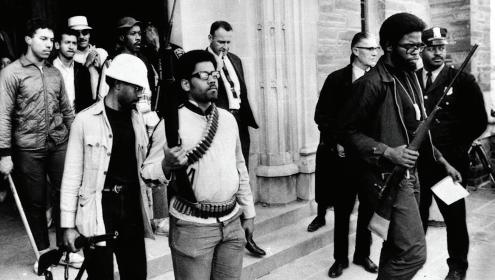
to be a part of it.”
Whitfield’s involvement in civil rights and the anti-war movement was not only at Cornell, but began at Little Rock Central High School in Little Rock, Arkansas, long before the Willard Straight takeover. In 1957, a few years before he attended Little Rock Central High School, the school had gained international attention when it integrated Black students and a group of federal troops escorted them to their classes amid protests after the Supreme Court ruled that separate but equal educational facilities were unconstitutional.
In high school, Whitfield became president of the Arkansas National Association for the Advancement of Colored People Youth Council. In 1966, he attempted to get a resolution passed at a regional NAACP conference to get civil rights activists exempt from the Vietnam War draft.
to find other civil rights activists interested in protesting against the war in Vietnam.
At 75 years old, Whitfield continues to fight economic inequality as a co-founder of Seed Commons, a community wealth cooperative that he said helps people “create self-sustaining, self-reliant [and] democratic structures.” He said the focus of the economic system should be on the needs and quality of life for working people — “labor using capital to enhance labor” – which is what Seed Commons is attempting to do.
Looking toward the future, Whitfield predicted that current students will have opportunities to further social inequality by joining companies that put profit over people, but that they should think twice before doing so.
According to Whitfield, the guns in the famous picture were not part of the original plan and instead were a response to white Delta Upsilon fraternity brothers entering Willard Straight and fighting the protesters.
“We decided to throw them back out the windows they broke,” Whitfield added. Influenced by the Orangeburg Massacre of 1968, where
Nearly 56 years later, Whitfield still remembers the impact his protest on campus had on his friends fighting in Vietnam.
“[The protests] meant while they were over there doing something, there were some people standing up for the Black community here in the States,” Whitfield said. “If it made them feel good, I’m certainly happy I was able
“Since [civil rights activists] were already fighting for freedom and democracy, I didn’t see any reason they should quit the fight they were engaged in here and go halfway around the world and engage in [war] in the name of freedom and democracy, [which] actually seemed more like it was enslaving and colonizing people,” Whitfield said.
Inspired by his sister, an alumna of Little Rock Central High School, Whitfield said he “wanted to prove that segregationist attitudes of looking down on Black people were ridiculous.” Whitfield said that he joined the AAS as soon as he could in order
“[Students at Cornell should] find something that’s much more creative, much more collective [and] much more community oriented to do with [their] talents, efforts and opportunities,” Whitfield said.
He said justice has many components, spanning from the occupation in 1969 to pro-Palestinian protests today.
“Freedom isn’t an event that takes place sometime in the future,” Whitfield said. “You don’t find it — you build it.”
Atticus Johnson can be reached at ajohnson@cornellsun.com. Shubha Gautam can be reached at sgautum@ corenellsun.com.
Pro-Palestinian Activist Who
Sued Trump Self-Deports
By BENJAMIN LEYNSE Sun News Editor
This story was originally published on April 5.
Momodou Taal, a pro-Palestinian activist and international Ph.D. student, announced his decision to leave the country on Monday — ending a weeks-long struggle with the federal government that began when he sued the Trump adminstration.
Soon after Taal announced his decision on X and Instagram, his lawyers withdrew his lawsuit in federal court.
Taal first made national news when he, alongside Sriram Parasurama, a Ph.D. student in plant sciences, and Prof. Mukoma wa Ngugi, literatures in English, sued the Trump administration for allegedly violating their First and Fifth Amendment rights. Their suit claimed that the implementation of two Trump executive orders targeted pro-Palestinian speech and dampened dissent.
The U.S. State Department revoked Taal’s F-1 student visa after U.S. Immigration and Customs Enforcement identified him for “disruptive action” on March 14, one day before the lawsuit was filed.
Taal would not be notified of the change to his visa status until March 21, according to testimony submitted in court by John Armstrong, senior bureau official for the U.S. Department of State’s Bureau of Consular Affairs.
Almost a week after Taal first sued the Trump Administration, his lawyers were sent an email requesting that he turn himself in to ICE on March 21.
Taals lawyers unsuccessfully tried to chal-
lenge this request in court, submitting a motion for a temporary restraining order that would prohibit the government from deporting Taal in accordance with the executive orders that Taal’s lawsuit was challenging. This motion was denied by Judge Elizabeth Coombe of the Northern District of New York on Thursday.
According to the post made to his social media, Taal decided to leave because he stopped believing that the courts would guarantee his personal safety.
“Given what we have seen across the United States, I have lost faith that a favourable ruling from the courts would guarantee my personal safety and ability to express my beliefs,” Taal said. “I have lost faith [that] I could walk the streets without being abducted. Weighing up these options, I took the decision to leave on my own terms.”
Shortly after Coombe denied Taal’s motion, his lawyers filed a new amended complaint and temporary restraining order. However, following Taal’s announcement, his lawyers withdrew the lawsuit altogether, according to a notice of voluntary dismissal submitted to the court.
In a post to X, Taal’s lead counsel, Eric Lee, wrote, “I feel like a stranger in my country. What is America if people like Momodou are not welcome here?”
Reflecting on his choice to leave, Taal wrote on X and Instagram that, “This is of course not the outcome I had wanted going into this, but we are facing a government that has no respect for the judiciary or for the rule of the law.”
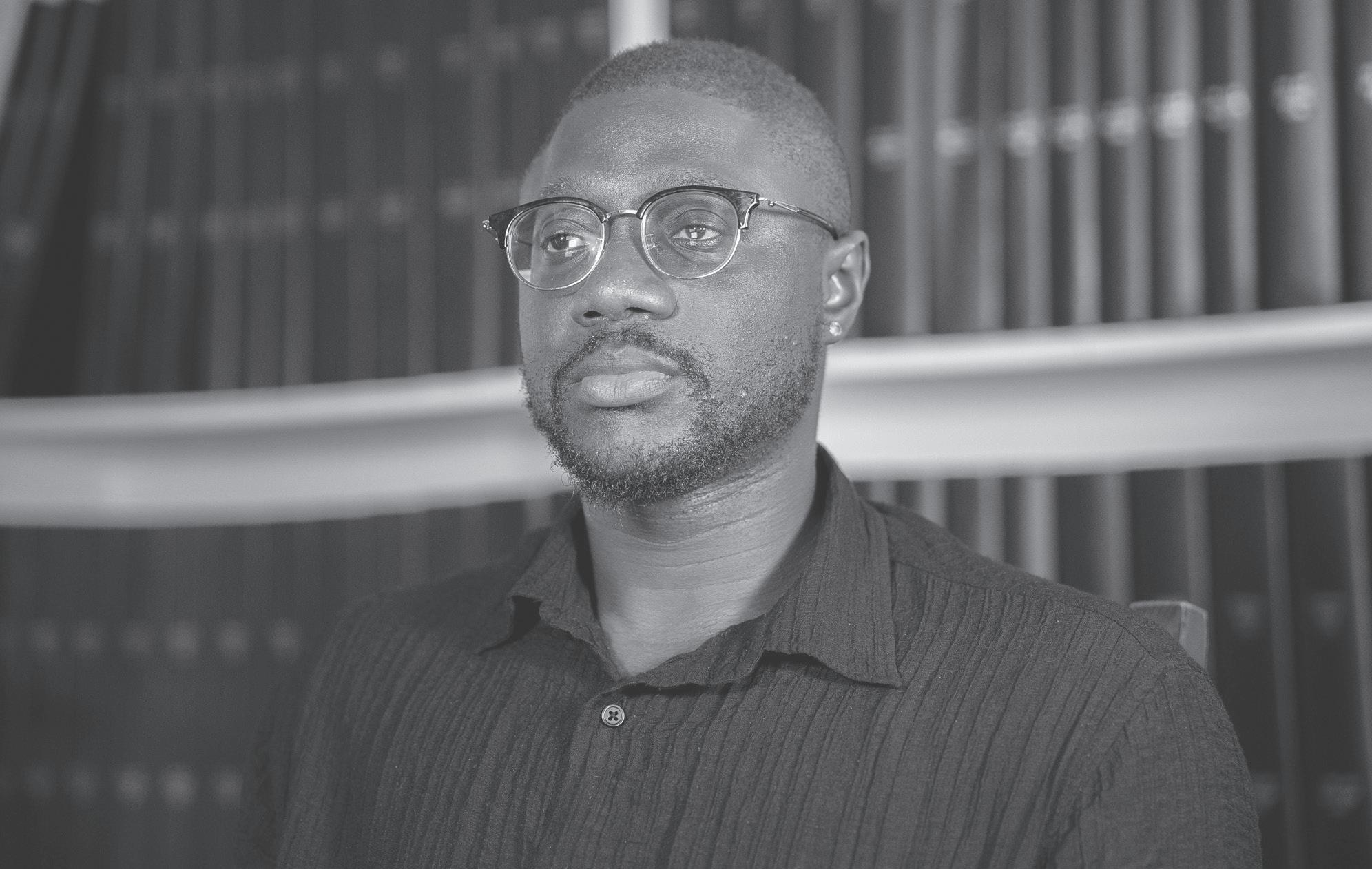

Nearly 20 Pro-Palestine Protestors Face Discipline
By JULIA SENZON Sun Editor in Chief
This story was originally published on September 30.
Nearly 20 pro-Palestinian protesters who helped shut down a career fair attended by defense contractors earlier this month have been identified through video and photographic evidence and have been referred for disciplinary action, according to a Monday afternoon email from Interim President Michael Kotlikoff to the Cornell community.
On Sept. 18, more than 100 pro-Palestinian protesters confronted recruiters for defense contractors L3Harris and Boeing — a company students overwhelmingly voted that the University divest from last April — at the School of Industrial and Labor Relations’s Human Capital and Human Relations Career Fair.
At around 2 p.m., protesters banged drums, pots and pans and chanted “Free Palestine” as they entered Statler Hall, where the career fair was taking place. Recruiters for most companies there took down their tables about 20 minutes after protesters arrived, ahead of the event’s 3 p.m. scheduled end time.
Kotlikoff wrote that the disruption “was not a peaceful or harmless rally, as some have described it.”
According to the Monday afternoon statement, protesters were explicitly told that they were not permitted to enter Statler Hotel by Cornell University Police Department officers. They pushed through police at the ground-floor and second-floor entrances, according to Kotlikoff.
The Office of Student Conduct and Community Standards assesses whether interim measures are “immediately necessary to protect the community” when students are referred for an alleged Student Code of Conduct violation, Kotlikoff wrote.
The most significant interim measure is a full temporary suspension until the case is resolved. Under the Code of Conduct, students placed under interim measures such as suspension are provided information about the charges and the appeal process, with full temporary suspension allowing for “two independent levels of appeal, the final being to the provost of the University.”
A full temporary suspension was only recommended for career fair protesters identified as physically forcing their way through CUPD officers, leading the disruption or previously violating the Code of Conduct, according to Kotlikoff.
The University issued international student Momodou Taal grad a full temporary suspension early last week for not complying with CUPD orders to stay out of Statler Hotel and participating in “unreasonably loud” chants at the career fair. Taal, a vocal campus activist, also was suspended last semester over his involvement in the pro-Palestinian encampment.
The suspension may jeopardize Taal’s F-1 status and lead to his deportation to the United Kingdom. His first appeal was denied by Ryan Lombardi, the vice president of student and campus life, according to a post Taal made on X on Thursday. Taal has a second appeal pending, which will be decided by Interim Provost John Siliciano.
Taal, who up until Monday was the only protester known to be facing punishment for participating in the career fair disruption, previously claimed that the University had targeted him.
“No one has been singled out, and no one who did not participate in the disruption of this University event has been referred,” Kotlikoff stated.
Julia Senzon can be reached at jsenzon@ cornellsun.com.
Kotlikof Named President Eight Months into Two-Year Term
Continued from page 1
When asked why Cornell decided to end its two-year search for a permanent president or whether external candidates were considered, Cornell Media Relations referred The Sun to the Friday email announcing Kotlikoff’s election and the Cornell Chronicle article. However, neither directly addressed the two questions.
When asked about his plans for the time after his interim presidency in a September interview with The Sun, Kotlikoff said that he would “almost certainly retire,” after completing his two-year interim presidency term.
“I closed my lab a few years ago. I still teach a little bit, but I’ll retire at that point,” he said at the time.
When asked why he was serving a two-year term as interim president, Kotlikoff said, “The two-year term is to give stability. I was provost, and if
I now become president on an interim basis or on an acting basis, and we immediately start searching for a president we would have to start searching for a president and a provost at the same time.”
Kotlikoff suggested that the next president will “most likely be an external candidate and one who’s not as familiar with Cornell.”
During his 25 years at Cornell, Kotlikoff has worked as a lab director, professor, teacher and mentor, researcher, department chair and dean.
As interim president, Kotlikoff established a firm stance on expressive activity.
“While this right [freedom of expression] is foundational, it is not unlimited,” Kotlikoff wrote in an August University statement. “The expressive activities of individuals necessarily unfold within the context of our broader university community, and as such they are bounded by the need to pro-
tect the core functions of the university and the reciprocal rights of others.”
Going into the position of interim president, Kotlifkoff and Provost Kavita Bala established in February a new task force to prevent sexual assault on campus.
As interim president, Kotlikoff also formed a Presidential Task Force on Institutional Voice, which outlined how and when the University should speak institutionally on politics, ideology, current affairs and world events. He formed the task force a year after he and then-president Pollack provided an update on its Interim Expressive Activity Policy addressing concerns about free expression restrictions on March 11, 2024.
Kotlikoff formerly served as founding chair of the biomedical sciences department, the dean of the College of Veterinary Medicine and provost. He served for nearly nine years and stands as the longest-serving provost in
Cornell history.
As provost, Kotlikoff oversaw the Radical Collaboration Initiative, the creation of the SC Johnson College of Business and the Jeb E. Brooks School of Public Policy. He also contributed to the North Campus Residential Expansion project and assisted with Cornell’s COVID-19 response.
Kotlikoff emphasized the importance of freedom and responsibility under his leadership in his introduction letter to the Cornell community after accepting the role of interim president.
“In contentious times, it is particularly important that each of us understand and honor the freedoms and responsibilities that we have as Cornellians,” Kotlikoff wrote. “To listen to and respect each other’s views, and to build a community where everyone feels they belong.”
Trump Administration Freezes Over $1 Billion in Funding Kotlikoff Rescinds Kehlani Invitation
By MATTHEW KIVIAT Sun Assistant Managing Editor
This story was originally published on April 8.
The federal government has frozen over $1 billion in funding for Cornell, according to members of the Trump administration. This comes amid Title VI investigations of Cornell by the U.S. Department of Education.
The move follows the slashing of more than $3.3 billion in federal funding from several Ivy League universities, including Columbia, Harvard, the University of Pennsylvania, Brown and Princeton. The Trump administration also froze $790 million in funding for Northwestern, according to The New York Times.
Cornell receives both federal and state funding for its research and grants for students. The freezing of Cornell and Northwestern’s funding from the federal government will primarily involve grants and contracts with the departments of agriculture, defense, education and health and human services, The New York Times reported.
A Monday evening statement from Cornell administrators explained that the University was “aware of media reports suggesting that more than $1 billion in federal grants have been frozen” but had “not received information that would confirm this figure.”
However, Cornell saw more than 75 stop work orders from the Department of Defense on Monday related to Cornell research “that is profoundly significant to American national defense, cybersecurity, and health,” according to the statement.
The ED Office for Civil Rights sent a letter on Feb. 14 to Cornell and other federally funded educational institutions, ordering the dissolution of “racial preferences” and other University race-conscious decisions. The ED highlighted in the letter that universities could potentially lose federal funding if they did not comply within 14 days.
Following the initial letter, the OCR announced the opening of an investigation of Cornell and 44 other universities under Title VI. The OCR explained that the investigations came amid allegations that the
universities violated Title VI of the Civil Rights Act of 1964 by working with The Ph.D. Project — which “purports to provide doctoral students with insights into obtaining a Ph.D. and networking opportunities, but limits eligibility based on the race of participants,” according to the OCR.
Cornell was also one of 60 schools sent letters from the ED on March 10, warning the universities to “fulfill their obligations under Title VI of the Civil Rights Act to protect Jewish students on campus” or see “enforcement actions.”
The March 10 letter was sent to universities that were under investigation for antisemitic discrimination and harassment.
Administrators ended the Monday statement by highlighting that Cornell has worked to create an environment on campus where all viewpoints and individuals are “protected and respected.”
“We are committed to working with our federal partners to continue the contributions made by our scientists and scholars,” the Monday statement reads.
Matthew Kiviat can be reached at mkiviat@cornellsun.com
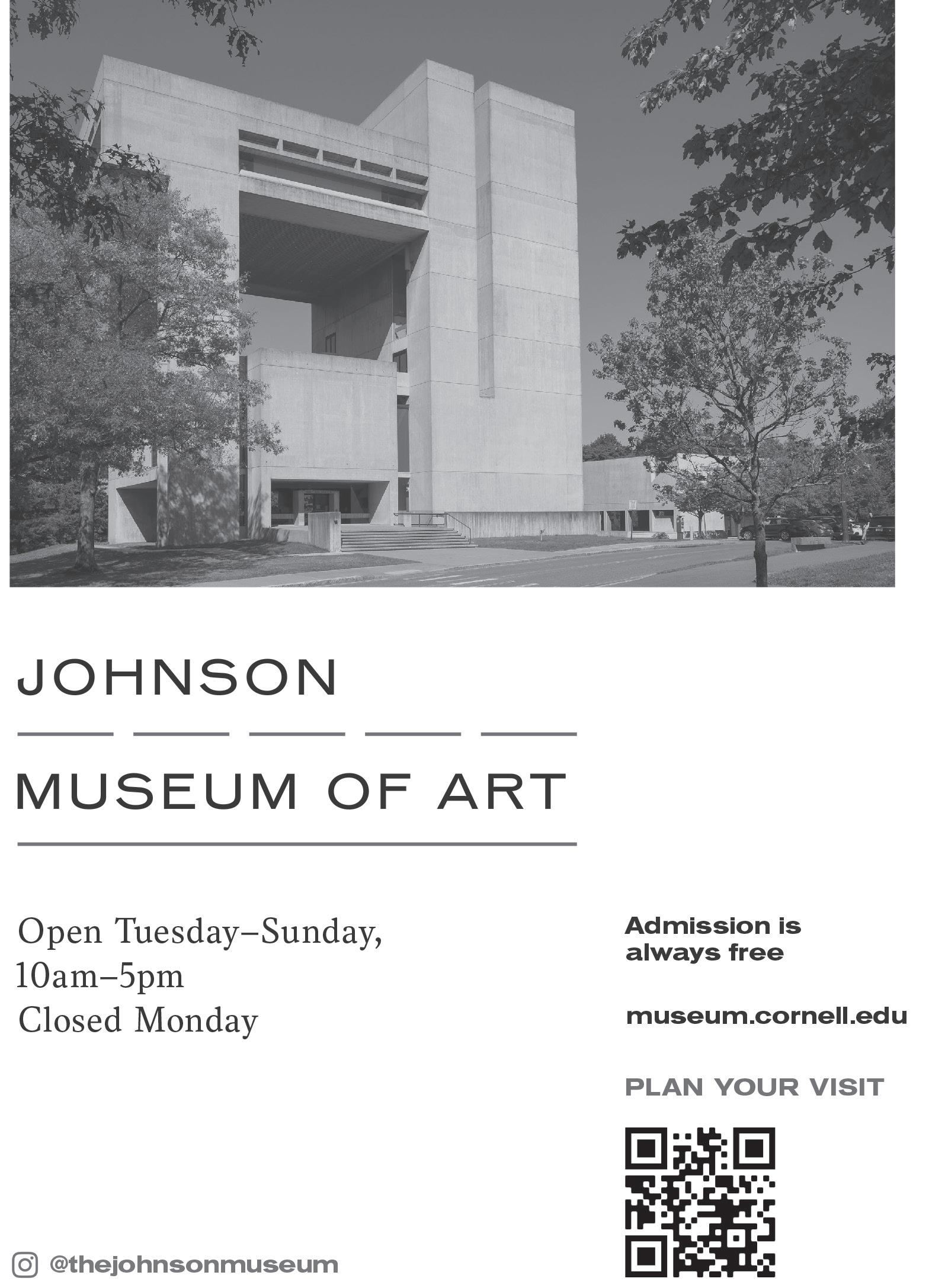
KEHLANI Continued from page 1
Despite Kotlikoff’s insistence that the Cornell community values freedomThe announcement to replace Kehlani from the Slope Day lineup contradicts Kotlikoff’s original claim that it was “too late to secure another performer that will be acceptable or appropriate for Slope Day” at a Thursday Student Assembly meeting.
On Tuesday, Kotlikoff met with approximately 70 students to discuss Kehlani performing at Slope Day in a town-hall style meeting advertised to members of pro-Israel campus groups and historically Jewish Greek life organizations. Here, Provost Kavita Bala revealed that Kotlikoff would announce his decision regarding the event within 24 hours.
Pine Point Medical
In the email, Kotlikoff noted that he had heard “grave concerns” from many distressed about the choice in performer, who he wrote had “espoused antisemitic, anti-Israel sentiments in performances, videos, and on social media.”
“While any artist has the right in our country to express hateful views, Slope Day is about uniting our community, not dividing it,” Kotlikoff wrote.
A joint Instagram post with Cornellians for Israel, Alums for Campus Fairness, StandWithUs Campus and Stand With Us also cited screenshots of Kehlani’s Instagram which she referred to Zionists as the “scum of the earth” and said they should “go to hell.”
The post also references Kehlani’s “Next 2 U” music video, released in June 2024, opens with a message that flashes “Long Live the Intifada” and features dancers in keffiyehs waving Palestinian flags.
Kotlikoff acknowledged that while some students may celebrate or criticize rescinding Kehlani’s Slope Day invitation, he believed that it was the “right thing to do” to ensure campus safety at such a “high-profile event.”
Kotlikoff wrote that he talked to members of the Slope Day Programming Board, who agree that the selection has “compromised what is meant to be an inclusive event.”
“Going forward, we will work together to revise the process for researching and selecting performers for this important annual event,” Kotlikoff wrote.
Dorothy France-Miller can be reached at dfrancemiller@cornellsun.com
Three Students’ SEVIS Records Restored
By EVERETT CHAMBALA Sun Contributor
This story was published April 28.
The Trump administration announced on Friday that it would walk back the revocation of over 1800 student visas, reversing a months-long campaign that targeted international students for removal. These walk-backs include the restoration of Student and Exchange Visitor Information System records for three Cornell students.
This announcement comes amid widespread student visa revocations and terminations of over 1,840 SEVIS records from over 240 colleges and universities across the United States, according to an Inside Higher Ed tracker.
17 current and former Cornell students were among this number. The University revealed on April 16 that 17 SEVIS records were terminated by federal authorities, with at least four of the students reporting visa revocations.
Now, the Trump administration’s policy reversal could spell the reinstatement of SEVIS records for these affected students.
SEVIS records are a web-based system maintained by the Department of Homeland Security which tracks student visa status. When a SEVIS record is terminated based on a status violation, students lose their visa and must leave the country immediately or face penalty, including potential deportation.
In a statement to The Sun, Wendy
Wolford, vice president of International Affairs, said that three of the nine current students with terminated SEVIS records have so far had their records reinstated, “ensuring their ability to continue their education in the U.S.”
The University also responded saying they “do not know” if any students have had their visas restored.
Tricia McLaughlin, a Homeland Security Department spokeswoman, told the New York Times that “We have not reversed course on a single visa revocation. Instead, “What we did is restore SEVIS access for people who had not had their visa revoked.”
According to the NYT report, a new system of revocation and termination of visas is in the works. However, until this new system is created, all changes made to international students’ legal status from recent weeks will be restored.
In a statement made by ICE Headquarters, they explained that SEVIS records cannot be terminated based on data obtained from the National Crime Information Center until a new policy is issued which will “provide a framework for SEVIS record terminations.”
In their statement, the University spoke in favor of the Trump administration’s policy reversal.
“We appreciate the administration’s decision to reverse the SEVIS terminations and restore visas,” a Cornell spokesperson wrote.
Everett Chambala can be reached at ewc49@cornell.edu.
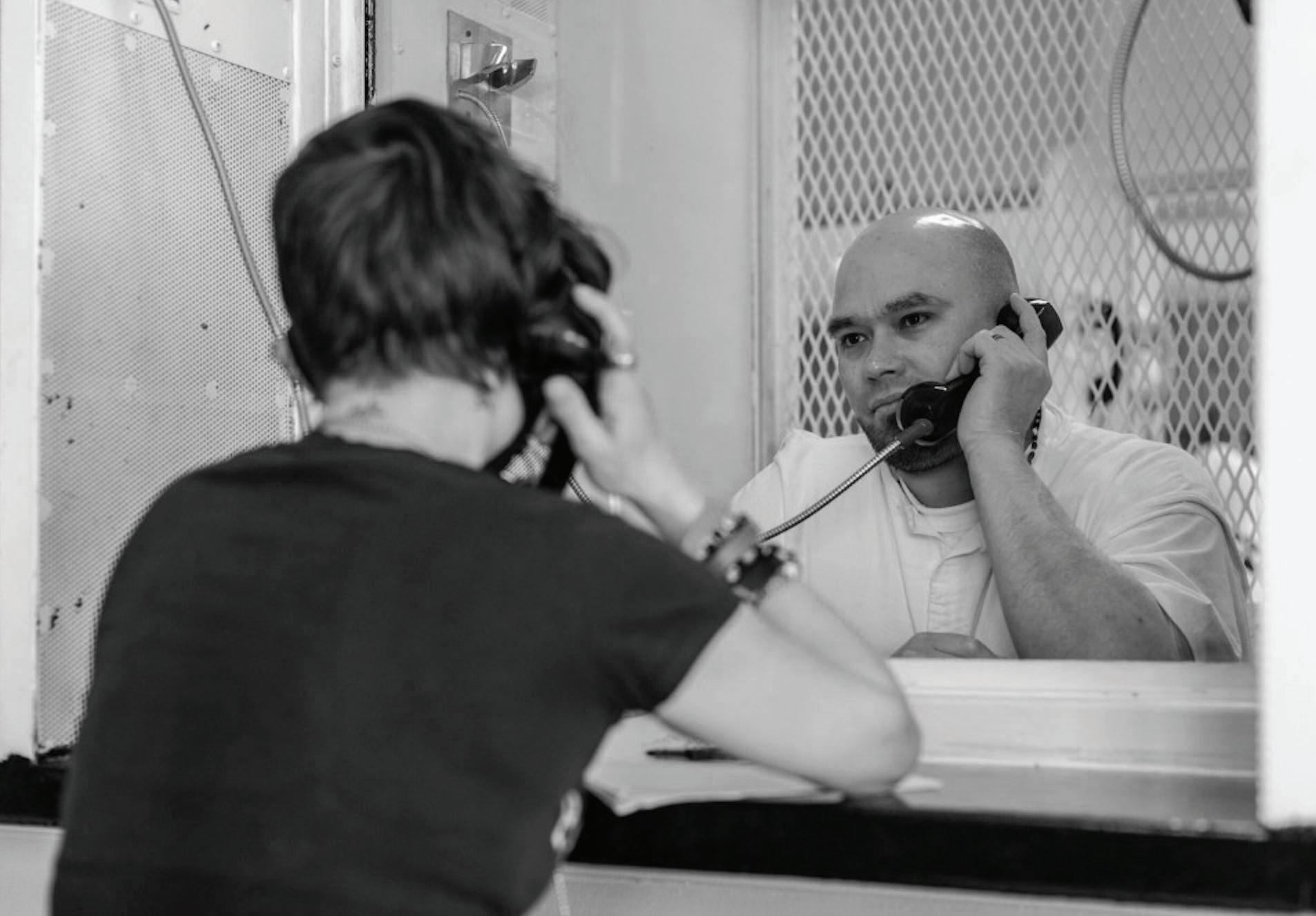
Keri Blakinger ’14 Receives Oscar Nomination for Death Row Documentary
By
This story was originally published on February 20.
Keri Blakinger’s ’14 work documenting the lives of death row inmates earned her the title of 2024 Pulitzer Prize Finalist. Now, she can add an Oscar nomination to her roster.
The former Sun staff writer and current Los Angeles Times staff writer helped produce the death row documentary I Am Ready, Warden and was named a contender for the Best Documentary Short Film Oscar on Jan. 23. The documentary is based on the story of John Ramirez, an inmate who was executed at the Huntsville, Texas state penitentiary on Oct. 4, 2022.
The film came out of her journalistic work featuring death row inmates, including the 2023 article “Dungeons & Dragons Players of Death Row.” The article was written for The Marshall Project, a nonprofit newsroom reporting on the U.S. criminal justice system, and featured in The New York Times Magazine.
Blakinger first became entangled with Ramirez when a prison spokesman pulled her aside during a reporting outing. He informed her that Ramirez requested she view his execution.
She found it an “unusual request.” Blakinger did not know who Ramirez was before then. “I’ve witnessed executions, but never because someone requested that I do so,” she said.
From there, Blakinger began interviewing Ramirez to get to know him. She published several articles inspired by him in his final days. One article, “The Prisoner-Run Radio Station That’s Reaching Men on Death Row,” caught the eye of American filmmaker Smriti Mundhra. Mundhra and Blakinger decided to collaborate and bring Ramirez’s story to film. Mundhra and Blakinger initially intended to focus on the idea of redemption, intrigued by Ramirez’s admission of guilt and conversion to faith during his time on death row. With small hopes, they reached out to the family of Pablo Castro, who Ramirez fatally attacked in the 2004 robbery that brought him to death row.
At the last minute, Aaron Castro, the son of Pablo Castro, agreed to be in the film — a move that would transform the entire focus of the documentary.
“[Watching him] in the moments after the execution, sitting with his immediate reaction to it … ended up allowing us to create a film that explored
whether the death penalty actually provides closure in the way that we are often told that it does,” Blakinger said.
Instead of an angle focused solely on Ramirez’s redemption, viewers are left watching Aaron come to terms with the execution of his father’s killer.
Blakinger’s journey through journalism has taken her across the country. Following her graduation from Cornell with a Bachelor of Arts in English, Blakinger began her professional journalism career writing for the Ithaca Times, later moving to the New York Daily News and transferring papers again through a Hearst fellowship that put her on the Houston Chronicle.
At the Houston Chronicle, Blakinger’s work shifted focus to criminal justice — pitches she believes came from her own time in prison after a 2010 drug charge.
“[Watching him] in the moments after the execution, sitting with his immediate reaction to it ... ended up allowing us to create a film that explored whether the death penalty actually provides closure in the way that are often told that it does.”
Keri Blakinger ’14
Once hired out of the fellowship program, Blakinger officially took on a side beat as a death row reporter for the Houston Chronicle. In the years since her Houston Chronicle hiring, Blakinger’s reporting slowly expanded to covering prisons and specializing more broadly in criminal justice. Blakinger credits landing in Houston with her accidental discovery of her passion for death row reporting.
Blakinger moved from Houston to the Los Angeles Times in January 2023, a year before the film’s initial release in February 2024. She sees her established work as a journalist continuing to take her in various directions, either continuing with more journalism or an entirely new creative endeavor.
As for how Blakinger believes her recent accolades have impacted her career, “It doesn’t change anything in a lot of ways,” she said.
“I’m still trying to do the same things, and I’m still trying to tell stories that have [an] impact.”
Astronomer Vera Rubin M.S. ’51 Featured On a U.S. Quarter
By TAEHEE OH Sun Senior Writer
This story was originally published on March 20.
Vera Rubin, M.S. ’51, the pioneering astronomer whose groundbreaking research on galaxy rotation rates provided key evidence for the existence of dark matter, will be honored on a U.S. Quarter as part of the 2025 American Women Quarters Program.
The American Women Quarters Program, launched by the U.S. Mint and the Smithsonian American Women’s History Museum in 2022, is a four-year initiative authorized by the Circulating Collectible Coin Redesign Act of 2020. Each year, the program features five women on the reverse side of the quarter, recognizing their achievements and contributions with unique designs.
Past honorees of the program include poet Maya Angelou, former First Lady Eleanor Roosevelt and former Congresswoman Patsy Mink, among others.
In the final year of the program, Rubin is honored alongside journalist and suffragist Ida B. Wells, Girl Scouts founder Juliette Gordon Low, disability rights activist Stacey Park Milbern and athlete Althea Gibson.
Rubin, who died in 2016 at the age of 88, is best known for her pivotal research in the 1970s that offered strong evidence for the existence of dark matter — an invisible substance that holds galaxies together and is believed to comprise over 80 percent of the universe’s total mass.
In 1985, Rubin presented data on dark matter from dozens of galaxies to the International Astronomical Union, reshaping scientific understanding of the universe and paving the way for new advancements in both astronomy and physics.
Corey Earle ’07, a Cornell history expert, emphasized the rarity and significance of Rubin’s recognition.
“The number of people who get to appear on coins is pretty minuscule, even compared to other unique honors like appearing on a postage stamp,” Earle wrote in an email to The Sun. “Rubin is one of dozens of Cornellians to win the National
Medal of Science, but she’s the only one on a coin.”
Jillian Epstein ’25, the outreach coordinator for the Cornell Astronomical Society, expressed her excitement in having a Cornell alum being recognized for a significant contribution in the field of astronomy.
“I look forward to keeping my eye out for Vera Rubin’s quarter,” Epstein wrote in an email to The Sun. “Additionally, it is so cool to see this being minted in the same year the Vera C. Rubin Observatory in Chile is expecting to see first light!”
In the context of astronomy, “first light” refers to the first time a telescope takes an astronomical image after it has been constructed.
Epstein also shared that CAS plans to celebrate Vera Rubin’s honor and recognize her groundbreaking contributions to the field.
“We are currently working to renovate the Fuertes Observatory historical museum (a long-term project), and have plans to highlight Rubin’s important contributions to the field of Astronomy and her connection to Cornell,” Epstein wrote.
In addition, to celebrate Rubin’s 100th birthday in 2028, Epstein wrote that CAS will likely have “special events to honor her important contributions and the results from the first few years of the Rubin Observatory’s Legacy Survey of Space and Time.”
Rubin began her academic career in 1944 at Vassar College as an undergraduate studying astronomy. Upon graduating, Rubin started her masters at Cornell in 1948 at a time where women were “very underrepresented in STEM fields,” according to Earle.
“Rubin arrived a year after the first woman faculty member in the College of Arts and Sciences: Martha Stahr Carpenter, an astronomer who was appointed assistant professor in astronomy in 1947,” Earle said. “Carpenter was one of Rubin’s professors and thesis advisors, and I imagine having that representation and mentorship was important.”
Taehee Oh can be reached at toh@cornellsun.com.
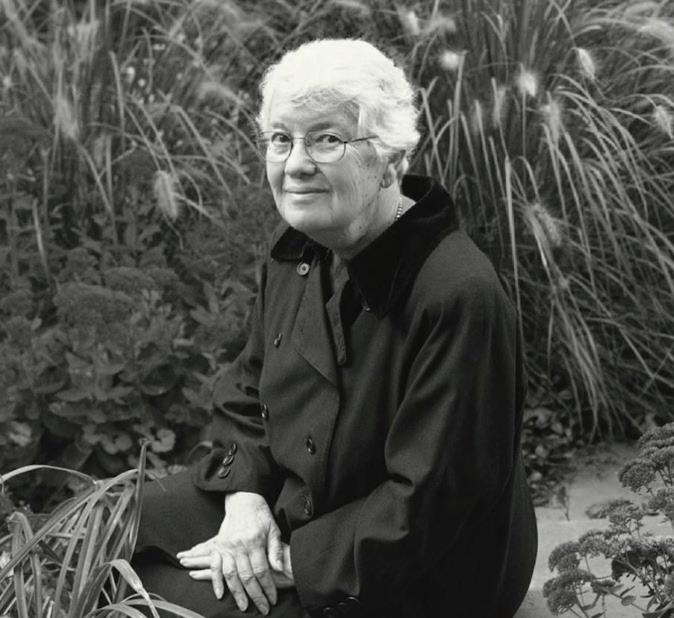
Any Person, Every Milestone:161 Things Every Cornellian Should Do
20 years. Thousands of memories. 161 traditions. Two decades after the original list debuted, the outgoing 142nd Editorial Board revamped our famous list, updating the quintessential experiences that define life on the Slope. So grab a carnelian colored pen (or steal one from the A.D. White House), and get to checking!
o 1. Make the library into your bedroom and have sex in the stacks
o 2. Go to the Cornell-Harvard men’s hockey game and throw fish on the ice
o 3. Go to Zeus after class. Sit on a bench because all the tables are being used or coffee chats
o 4. Take off to NYC for Fall Break, being sure to post on Instagram about it at least twice
o 5. Sled down Libe Slope during a snow storm
o 6. Take Hotel Administration 4300: Introduction to Wines
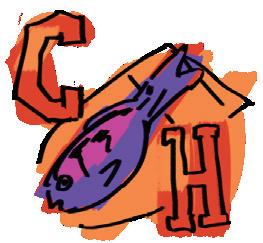
o 7. Take AMST 2000 and learn some Cornell history from Corey Earle ‘07
o 8. Streak across the Arts Quad
o 9. Go sake bombing at Plum Tree
o 10. Order ice cream at the Dairy Bar
o 11. Climb the rock wall in Bartels Hall
o 12. Listen to a full chimes concert from the clock tower. Guess the songs played

o 13. Order the same thing off the Collegetown Bagels menu all four years
o 14. Register for classes during Freshman Pre-Enroll, then switch out of every single one by the time Add/Drop ends
o 15. Dress for 70 degree weather. Cry as you walk home in the freezing cold that night
o 16. Steal a vegetable from the Cornell Botanic Gardens. Savor it
o 17. Go to the Fuertes Observatory on North Campus and gaze at meteor showers
o 18. Enroll in BIOEE 1540: Introductory Oceanography as a joke, then fall in love with Bruce Monger and attend every class
o 19. Have a snowball fight in May
o 20. Stick your hand inside a fistulated cow
o 21. Skip class to play SpikeBall on the Arts Quad

o 22. Bury a bottle of Barton’s on the Slope. Dig it up on Slope Day.
o 23. Enjoy golden hour from the Cornell Botanic Gardens
o 24. Attend the Apple Festival on the Commons
o 25. Flirt with your professor
o 26. Bomb a prelim
o 27. Ace the next one to save your grade

o 28. Steal a bunch of cups from the dining hall and never give them back
o 29. Attend Hotelie prom
o 30. Take a selfie with Happy Dave from Okenshield’s
o 31. Take three finals in two days because they were just over 24 hours apart
o 32. Get heartburn at the Chili Cook-off on the Commons
o 33. Enjoy Ithaca’s two months of warm weather — spend a summer here!
o 34. Go to a Shabbat dinner at 104West!
o 35. Watch the AAP students parade down East Avenue on Dragon Day
o 36. Walk out of class to warm weather and immediately get a beer at CTB
o 37. Build a snow penis or count how many you see around campus
o 38. Dress up and view The Rocky Horror Picture Show at Risley
o 39. Take a class you think is impossible just for fun
o 40. Go to Catherine Valley for a wine tour
o 41. Kiss on the suspension bridge at midnight
o 42. Take Plant Pathology 2010: Magical Mushrooms, Mischievous Molds
o 43. Shop at the Friends of the Library Book Sale
o 44. Get a University parking ticket, then sweet-talk your way out of it

o 45. Buy an Ithaca Is Gorges t-shirt, then get sick of wearing it and buy a dumb variation (Ithaca Is Gangsta, Vaginas Are Gorges, Ithaca Is Long Island…)
o 46. Learn the “Alma Mater,” “Evening Song” and “Give My Regards to Davy.” Hum them when you hear the chimes
o 47. Attend an opening at the Herbert F. Johnson Museum of Art
o 48. Smuggle food from the dining hall and run for your life as they try to get back your stolen cookies
o 49. Make the Walk of Shame. See an ex on your way home
o 50. Have dinner at a professor’s house
o 51. Get wasted at a professor’s house
o 52. Take a selfie with a Cornell president
o 53. Play a game of tag in the Kroch Library stacks
o 54. Take a class that meets outside
o 55. Start your freshman year pre-med. Graduate from Dyson.
o 56. Kayak or canoe on Beebe Lake
o 57. Watch dancers fly through the air at Pao Bhangra show
o 58. Have a midnight picnic in the Ag Quad

o 59. Wait in line for half an hour for an orange chicken burrito at Terrace
o 60. Ignore the “No Winter Maintenance” signs … slip and fall down the stairs
o 61. Sit in Libe Café when you have no work to do and watch worried students down gallons of coffee
o 62. Write an angry letter to the editor of The Sun
o 63. Get swarmed by freshmen as they migrate back to north
for the final, wish you had taken notes instead
o 80. Go ice skating at Lynah Rink
o 81. Request a song to be played on the clock tower
o 82. Watch the ginger run
o 83. Walk to class in the snow, uphill both ways


o 64. Explore the secret underground tunnel between Uris and Olin libraries
o 65. Request an item from the library’s Rare and Manuscript Collection.
o 66. Pretend you are Harry Potter and study in the A.D. White Reading Room
o 67. See the brain collection in Uris Hall
o 68. Use all your CityBucks at 7-11 on Keystone and Twisted Tea Light
o 69. Submit a guest column for Sex on Thursday about your raunchy sexcapades
o 70. Eat your way through the Farmer’s Market
o 71. Sleep through your alarm for a 1:25 p.m. class
o 72. Take part in a psychology experiment and get a measly number of SONA credits
o 73. See Ezra Cornell’s body in the crypt
o 74. Occupy Willard Straight or storm Day Hall

o 75. Watch as a virgin crosses the Arts Quad at midnight and A.D. White and Ezra Cornell walk towards each other to shake hands on Halloween
o 76. Live through an Ithaca blizzard and tell your friends you survived frostbite
o 77. Throw a flaming pumpkin into the gorge
o 78. Join an intramural sports team. Take it too seriously and get matching uniforms
o 79. Spend all your lectures figuring out the Wordle and Connections. While sitting
o 84. Hook up with someone in your dorm and then see them every day afterward
o 85. Write dirty messages with rocks in the gorge
o 86. Eat a chicken parm sandwich from Louie’s Lunch
o 87. Walk the runway as a model in the Cornell Fashion Collective’s annual fashion show
o 88. Sleep through pre-enroll and change your major as a result
o 89. Gain the freshman 15. Pay $145 for a gym membership and don’t go.
o 90. Play trivia at Collegetown Bagels on Tuesday nights
o 91. Go bowling at Helen Newman Lanes
o 92. Get a ticket for peeing on the Law School
o 93. Have a friend’s parents take you out to eat at Thompson and Bleeker or Simeon’s
o 94. See a concert at Barton Hall
o 95. Order off the secret menu at Louie’s Lunch
o 96. Cheer on your friends as they perform at the Schwartz Center
o 97. Pick next year’s ice cream flavor
o 98. Nap in every library on campus
o 99. Get too drunk before homecoming. Miss the game
o 101. See Yamatai bang it out at Clubfest
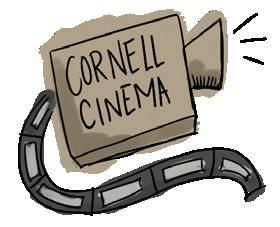
o 100. Take a midnight nap in Uris Library Cocktail Lounge and wake up 3 days later
o 102. Visit Ithaca Mall, realize it is severely lacking, then drive to Destiny USA Mall in Syracuse
o 103. Take a night prelim near the vet school, walk back in the dark
o 104. Get thrown out of Balch Hall
o 105. Attend a show at the State Theatre or Hangar Theatre
o 106. Go to an a cappella concert
o 107. Walk to a fraternity party with your entire freshman floor. Get turned away
o 108. Put on a swimsuit and jump into the cold water at Second Dam
o 109. Take part in Holi and get colorful
o 110. Eat at each dining hall at least once
o 111. Try to order pizza from a Blue Light phone
o 112. Have a traumatic OurBus experience. Never return
o 113. See a film at Cornell Cinema
o 114. Ride a horse at Oxley Equestrian Center
o 115. Take the BASICS program. Do it with a beer in hand
o 116. See how long you can go without doing laundry
o 117. Get lost during O-week as a freshman, and end up in the Commons
o 119. Check out a charger from Olin. Don’t give it back
o 120. Lose a friend over signing a lease in Collegetown
o 121. Walk holding hands around Beebe Lake
o 122. Buy a Cornell-grown apple from a vending machine
o 123. Get tapped for a secret society
o 124. Go skinny dipping in a gorge
o 125. Get more downvotes than upvotes on Sidechat
o 126. Host a prefrosh
o 127. Drive your car up and down Libe Slope
o 128. Make a chalking. Weep when it rains that night
o 129. Attend a Sun meeting
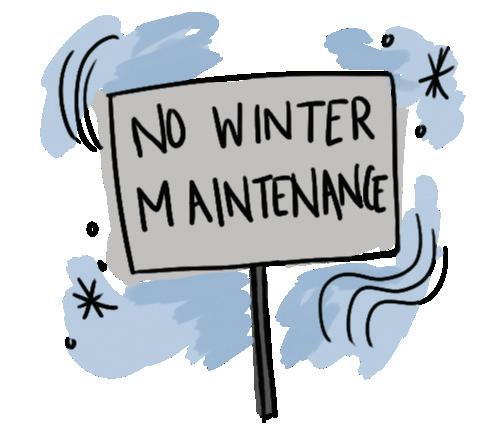
o 118. Have the Hideaway bartender take a picture of you because your fake doesn’t scan

o 130. Take photobooth pics at Hideaway and post them on your Instagram story
o 131. Eat hungover brunch at Morrison or Appel
o 132. Turn down a flyer at Ho Plaza and say “I already got one”
o 133. Rush a fraternity/sorority or mosey a Co-op during your freshman spring
o 134. Meet Bill Nye ’77, “The Science Guy,” and give him a hug
o 135. Ski at Greek Peak
o 136. Crash a political rally on Ho Plaza
o 137. Get on the wrong TCAT and end up at Ithaca College
o 138. Watch women’s hockey dominate any team who steps on the ice
o 139. See how many people you can cram into your dorm room
o 140. Order Wings Over after 2 a.m.
o 141. Make the trek down the hill: go to a townie bar
o 142. Tell a professor what you really think of his/her class
o 143. Drink with your R.A.
o 144. Go to the sex shop, called the “Adult Outlet,” on the Commons. Gawk
o 145. Run out of BRBs in March. Live off campus events’ free food for the rest of the year
o 147. Get asked if you are pregnant at Cornell Health
o 148. Attend a show at the State Theatre or Hangar Theatre
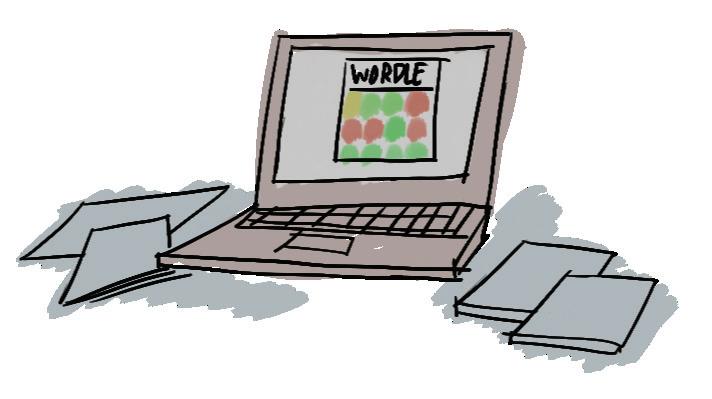
o 146. Heckle your tour guide friend as they’re leading a group of prospective students around campus
o 149. Go to ClubFest as a first-year and sign up for a dozen clubs that you’ll never go to
o 150. Complain about the Slope Day headliners
o 151. Ask for an extension on a term paper
o 152. Walk to class in the snow, uphill both ways
o 153. Accidentally rip a poster at the poster sale. Tell no one
o 154. Play mini golf at the Sciencenter
o 155. Hook up with your hot T.A.
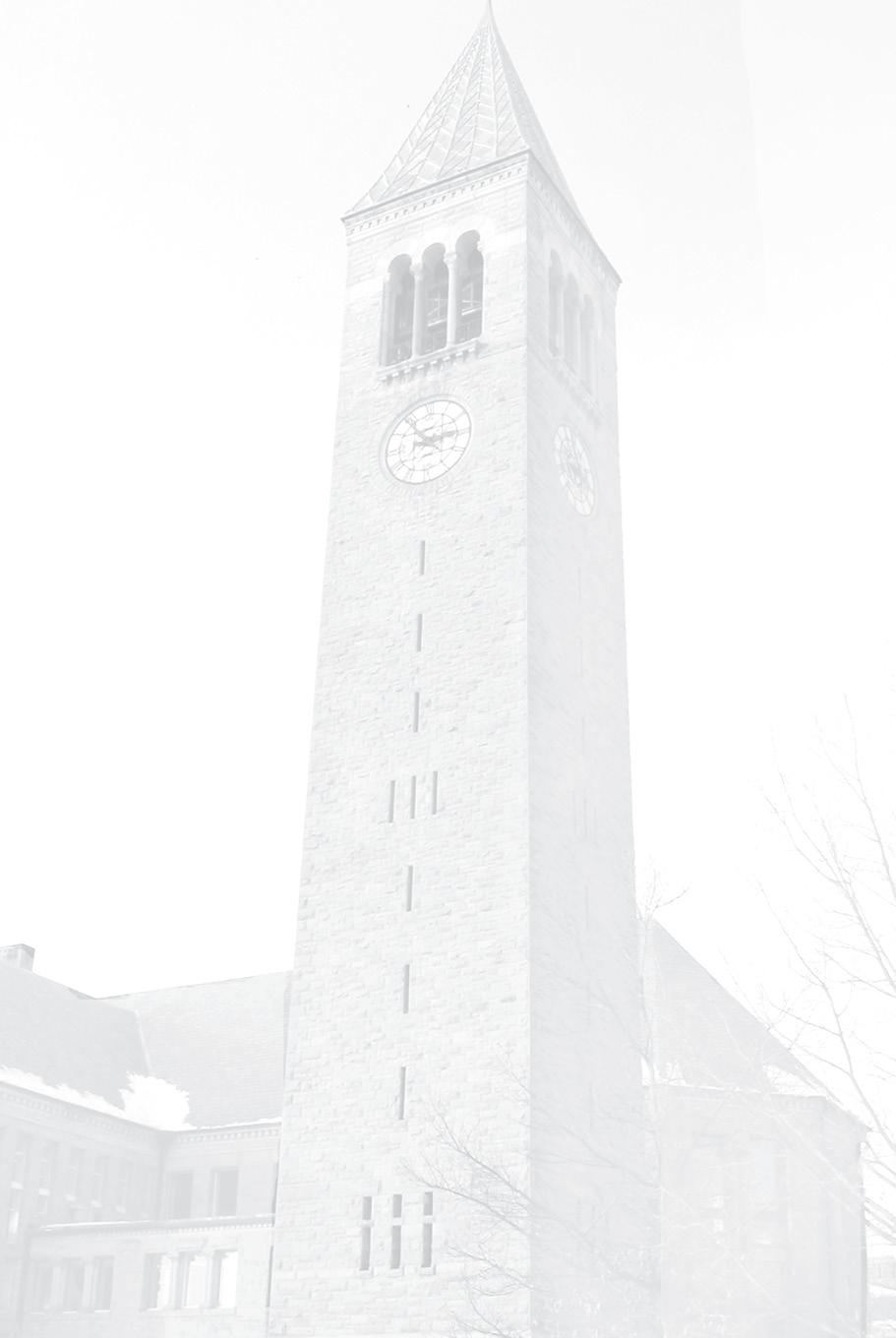

o 156. Go swimming at Treman State Park, Buttermilk Falls or Second Dam
o 157. Furnish an apartment entirely with items from Ithaca Reuse and the Dump & Run
o 158. Walk to a fraternity party as a senior; convince yourself you were never one of them
o 159. Fail your swim test, just for kicks
o 160. Eat a Pinesburger, then watch water flow over Taughannock Falls, the highest single-drop waterfall east of the Rockies
o 161. Climb all 161 steps to the top of McGraw Tower
SOPHIA DASSER Sun Opinion Editor
Cornellians love tradition — we love watching the chimes concert, slipping on the Arts Quad in $200 Blundstones and writing angry Sidechat posts about the last CHEM 2080 prelim. But even the oldest continuously independent college daily in the U.S. needs a little spring cleaning. From a shiny new website to Sun jerseys that rival Lynah’s finest, your favorite student paper has officially rebranded. This isn’t just a fresh coat of paint, it’s a full-blown editorial renaissance. From new merch to spicy columns, here’s everything you didn’t know you needed to know.
161 Things Got a Facelift (And Maybe a Personality Disorder) Forget 2019. The “161 Things Every Cornellian Should Do” has finally been updated with chaos, core memories and … court summons?
The last time it was updated, the top meme format was “Woman Yelling at a Cat,” and TikTok was still a Wild West. But Cornell has changed, and it’s time we do as well.
We’ve taken the 161 and made it more us. It’s the same spirit — packed with streaking, protesting and regretting — but with new rituals for a new age. This means chucking fish at Harvard, yes, but also sleeping through pre-enroll and then remaking your entire schedule during add/drop. It’s holding hands around Beebe Lake and then blocking each other on BeReal. It’s rage-crying over losing The New York Times Connections and pretending it was because you “weren’t trying that hard anyway.” It’s heartburn from the Chili Cook-off, the stress of asking for an extension you will abuse and maybe — just maybe — building a
The Sun Gets a Glow Up
snow penis that gets its own Instagram account. And best of all, it’s now officially Cornell-approved behavior — just check number 155.
This isn’t a bucket list, it’s a survival guide. And updating it felt like finally admitting we are not who we were in 2019 (we might be worse).
OOTD(S) — Outfit of The Daily Sun
Tired of repping Cornell in the same shade of carnelian red? Of wearing itchy club quarter-zips that feel like bad inside jokes? Of hiding your Sun writer identity because you identify as a person who writes for the Sun, not a Sun writer? Now’s your moment.
The Sun’s new merch line is full of clever quips, subtle but fresh graphics and yes — even hockey jerseys. Nothing says “student journalism” like tossing fish in the stands while wearing our logo. With everything from hockey jerseys to tongue-in-cheek mugs, it’s the kind of wardrobe that says, “I’ve read Marx, but also love a good brunch.” You can finally match your crippling imposter syndrome with a perfectly designed graphic tee.
Perfect for impressing your crush at Collegetown Bagels, intimating prelaws during coffee chats in Zeus or crying in Uris in style.
The Website Works Now. No, Seriously.
Our old site looked like it was built by a CS 1110 student in the Paleolithic era. But now? We’ve re-uploaded every piece, updated author profiles (even your favorite graphics and photo contributors) and redesigned the whole site so your daily scrolls are smoother than a drip coffee from Gimme! Coffee.
Curious who wrote that banger op-ed you saw on our Instagram? Click their name. Stalk their entire
profile. Send us a fan letter (or hate mail). It’s all easier now, we promise. Opinions in Orbit
We’ve always had opinions. Now we have franchise-worthy series to put them in.
Here at The Sun’s Opinion Department, we’ve always believed that nuance matters. That disagreement isn’t something to be feared — it’s something to be published.
This semester, we’re launching three new recurring series that aim to elevate that mission: The Eclipse, SUNder Review and Backstories & Bylines. These series are meant to push past the echo chamber and into the realm of layered discourse, where disagreements are thoughtful and argument is productive.
The Eclipse is designed to do just what the name suggests: shine a light on the obscured. It’s a space where contrasting perspectives on the same issue live side-by-side — not to cancel each other out, but to help illuminate the full picture. Think of it as Cornell’s intellectual sparring ground, where writers make their case on opposite sides of a central campus question.
SUNder Review takes a different tactic. Instead of a debate between two viewpoints, it’s a deep dive into a single issue, explored through multiple voices. You’ve already seen a preview of this in this week’s review on Michael Kotlikoff’s presidential appointment. Whether it’s major campus development, a national moment with local reverberations or a cultural flashpoint worth unpacking, SUNder Review gathers a chorus of opinions from columnists to guest submissions to offer a panoramic view — grounded in lived experience, curiosity and the kind of rigor that defines Cornell.
With Bylines & Backstories, you
can meet the minds behind the columns. We believe that powerful writing does not just come from opinion — it comes from experience, identity and perspective. That’s why we’re launching this new multimedia series designed to introduce you to our team of columnists in a format that goes beyond their byline. Through short video interviews, we’ll be pulling back the curtain on who’s writing what — and more importantly, why. Expect conversations that are candid, thoughtful and sometimes surprising, as writers share the moments, questions and contradictions that shape their columns. Think of it as the faces behind the fire.
We know your opinions are personal — so it’s time to make the Opinion section more personal too.
Lifestyle, But With a Pulse
Our Lifestyle section got tired of being the “girl next door” section. Now? She’s funny, vulnerable and chaotically relatable with Faded on Fridays, Sex on Thursdays, Dating on Wednesdays and Maia on the Mic. We’ve got your week covered, giving you real storytelling, written by people who probably left a situationship to write about it here.
So if you’ve ever cried in the Cocktail Lounge while Okenshields dinner queases your stomach, this one’s for you.
The Sun’s Out, A New Era Has Begun With new lists, new looks and new voices, The Sun brings us the same integrity with a rebrand. We hope you laugh, cry, ponder and rage-click our email to submit a guest column all in one sitting.
Let’s make this semester unforgettable (or at the very least well-documented).
Style - Approved Rankings of 161
Well, it’s that time of year again. We, The Cornell Daily Sun, have arrived once more with the prophecy in our hands — the single most important list of your college experience. “The Slope Day lineup?” you ask. No, and it’s not next week’s grocery shopping list, either. It’s our iconic “161 List,” through which we steer you in the direction of becoming a true Cornellian.
However, this isn’t News speaking. It’s Lifestyle. We’ve come to put our two cents in on which activities are worth your time and which are maybe better off remaining as words on the page. A sort of “buy or bye” situation, if you will. Which are true Cornellian plot points, and which are misrepresentations?
The Must-Dos as a Proper Cornellian
1. Please go to Zeus at the ripe time of 2:55 p.m. and struggle to find a table (as number 3 suggests). Yes, you’ll be flustered and embarrassed. And, yes, everyone will know that you cannot find a table and that is why you are pacing the perimeter. But it’ll be hilarious for the rest of us camped out there since 10 a.m., and it’s a great character-building moment.
2. Listen to a full chimes concert from the clock tower and guess all of the songs played (number 12). It sounds crazy, but somehow the clock
tower knows what you need to hear when you need to hear it. And if you happen to catch the right concert, you will know the songs, trust me. Maybe you’ll even be inspired to climb all 161 stairs of McGraw Tower.
3. I swear it gets colder throughout the day, especially on days when the forecast calls for sun and 70 degrees. Wake up one morning, get so super excited about the warmer weather (which is fool’s spring, by the way) and wear your finest shorts. Then, skip to class with a smile on your face and your favorite tunes in your ears. Get to class sweaty (this is important). Freeze in class because the academic buildings are set to 40 degrees. Finally, walk outside, have water well up in your eyes immediately and get nearly knocked over by the wind (number 15). You’ll be running home in no time.
4. You can run, but you can’t hide. Number 26 on the list will happen eventually. Bombing a prelim is a rite of passage for all Cornellians. Even the smartest of us end up covering our computer screen when grades are dropped. I know you were top of your class in high school. Get off your high horse and join us common folk.
5. Run out of BRBs in March, get denied by your parents for a refill and live off of campus events’ free food for the rest of the year (number 145). Come on, learn to be resourceful. It’ll be good for you! Plus, maybe you’ll meet campus event groupies
and make new friends!
6. Go to Catharine Valley for a wine tour (number 40). Because of the cyclical nature of Greek Life events, Cornellians in Greek Life organizations or who have friends in sororities and fraternities have the opportunity to attend a proper wine tour twice a year. Now, my personal suggestion is to go in the fall, as it is usually much warmer and much prettier in terms of the Catharine Valley atmosphere. Though, if you’re not a part of an organization that partakes in wine tours, you just may have to befriend a frat man … proceed with caution and at your own risk.
Not Worth the Hype
1. Alright, I’ll be that person. Please do NOT have sex in the stacks (number 1). If you really need further reasoning, I’ll give it to you. Who knows what is creeping and crawling on those floors late at night, and do you really want to find out in a compromising position? I didn’t think so. Also, just don’t. Please.
2. To be honest, I don’t know what a Hotelie prom is. Should I if I’m commenting on its validity as number 29 on this list? Probably. But I don’t want to. And neither should you. I’m imagining a long evening networking with the other attendees (and maybe even your own date) in stuffy formal attire.
3. For your own dignity, please do not make the walk of shame home and run into an ex (number 49). Stay classy and demure, and don’t let your
ex know what you’re up to. Unless you’re empowered by the thought of the situation. Then you should walk right past your ex’s dorm on your way home.
4. You can generally ignore the “No Winter Maintenance” signs on the stairs across campus, but it would really suck to take a tumble down the stairs (number 60). I find that all of the stairs on this campus are made of hard, sharp stone, and if you break a bone, that will actually suck. You need your hands and arms to help you struggle on prelims and your legs to assist you in achieving extreme exhaustion from walking up the slope.
5. Though this one might be inevitable, having a treacherous OurBus experience isn’t something I would even wish on my worst enemy (number 112). It is actually the worst feeling in the world, scrambling to make alternative arrangements to make it home in time for Thanksgiving break when your OurBus cancels on you. Last year, they overbooked my bus and kicked the last girl off because there were no seats. And I was the third-to-last one on said bus, so you can imagine my sheer shock when I processed that it very well could have been me. Zero out of 10, would not try again.
I’ll Stand Up and Applaud
1. Number 33, enjoying an Ithaca summer as someone who chooses to stay on campus over summer recess, is impressive. See, experiencing sum-
mer here sounds so great in theory, but being on this campus one moment longer after finals season would be my definition of my worst nightmare. If you’re mentally strong enough, good for you. And you’ll get to hold it over everyone’s head that you did some cool research or work opportunity here.
2. If you ever get to meet Bill Nye ’77, “The Science Guy,” and give him a hug (number 134), you’ve been blessed by a higher power. You’d stand in the presence of true greatness, and I’m not sure any other life moment could top that.
3. Explore the secret underground tunnels between Olin and Uris if you ever get the chance (number 64), though I have heard it’s near impossible to accomplish. There is also a tunnel going from Olin to the edge of Goldwin Smith, per one of Olin’s Rare and Manuscript Collection’s experts (though don’t tell her I told you).
If you take anything away from this list, it should be that Cornellians do freaky things sometimes. And since you’re a Cornellian, you may also do freaky things sometimes. It’s simple math that even ILRies can understand. Embrace the freak. Take a good look at the rest of the list and decide for yourself what’s worth doing and what’s not. Just know you’re walking in the footsteps of generations of Cornellians who may or may not have done the nasty in the very seat you’re sitting in right now.
Cornell Sues Federal Administration
Cornell, 11 Other Universities Sue NIH
By EMMA GALGANO Sun Senior Writer
This story was originally published on February 10.
Cornell, along with 11 other universities, filed a lawsuit against the National Institutes of Health on Monday challenging the recent cuts to funding related to “indirect costs” — which cover the expenses of research infrastructure — associated with NIH grants towards medical research.
This suit, filed by the Association of American Universities, the Association of Public and Land-Grant Universities and the American Council on Education, pushes back against recent action by the NIH to cap indirect funds for higher education research infrastructure to 15 percent of total grant dollars distributed. The lawsuit alleges that the proposed cuts violate federal grant regulations and administrative law and would harm medical research, the training of future scientists and the U.S.’s leadership in biomedical innovation.
Cornell and other leading research institutions could face annual losses exceeding $80 million each if a new policy from the NIH on research reimbursements takes effect.
What Are Indirect Costs?
The NIH — the largest source of funding for medical research in the U.S. — announced on Friday that it will significantly limit payments for indirect costs in grants as part of a broader push by the Trump administration to cut government spending.
When a grant is awarded, an additional percentage is added to cover “indirect costs” for the facilities housing the research. For NIH grants, this percentage has historically been around 2728 percent, but the new directive sets a 15 percent cap unless a different rate is negotiated. For Cornell, indirect cost funding supports items including administrative salaries, office supplies, general-purpose equipment maintenance and utilities.
Cornell’s current indirect cost rate for endowed on-campus research is 64 percent, according to the University’s Division of Financial Services. In the 2022 fiscal year, Weill Cornell Medicine received $107 million from indirect cost reimbursements. If the rate was set at 15 percent, Weill Cornell would have received only about $25.1 million.
Outcry to Cuts
David K. Skorton, a former president of Cornell and the current president and CEO of the Association of American Medical Colleges,
condemned the NIH policy in a statement from AAMC.
“The [Trump] administration’s decision to drastically reduce federal support for biomedical research by cutting reimbursement for peer-reviewed NIH grants will diminish the nation’s research capacity, slowing scientific progress and depriving patients, families, and communities of new treatments, diagnostics, and preventive interventions,” Skorton wrote.
In a Monday statement, the NIH justified the cuts by comparing them to rates used by other nonprofit foundations that fund medical research, explaining that the move would ensure that more funds go toward direct scientific research costs rather than administrative overhead.
“The United States should have the best medical research in the world,” the NIH statement reads. “It is vital to ensure that as many funds as possible go toward direct research costs.”
A federal judge has temporarily blocked the Trump administration’s planned reductions in medical research funding after 22 states filed a lawsuit seeking to halt the changes. As such, research at universities like Cornell will not be immediately impacted. A court hearing is scheduled for Feb. 21.
The University Responds
On Saturday, the Cornell administration criticized the NIH’s announcement of significant reductions in indirect costs for research funding in a University statement, and on Monday, a statement was sent to students and faculty explaining the joint lawsuit. Both statements were written by Interim President Michael Kotlikoff, Provost Kavita Bala and Provost for Medical Affairs Dr. Robert Harrington.
“Indirect costs are an essential component of the decades-long partnership between the federal government and universities to conduct research that saves and improves lives,” the Saturday statement reads.
As the University proceeds with filing the joint lawsuit, the Monday statement expressed that Cornell “remain[s] deeply committed to research” that “enhances” the lives of people around the world.
“We look forward to partnering with the NIH to ensure that we fulfill that mission together,” the administrators wrote.
Individuals with questions about existing grants or in-flight proposals are advised to email researchimpact@cornell.edu or WCMResearch@med.cornell.edu.
Emma Galgano can be reached at egalgano@cornellsun.com.
Cornell Sues DOE for ‘Unlawful’ Cuts
By MATTHEW KIVIAT Sun Assistant Managing Editor
This story was originally published on April 14.
The University joined litigation against the U.S. Department of Energy and DOE Secretary Chris Wright, according to a Monday email from President Michael Kotlikoff and Provost Kavita Bala. The plaintiffs of the case are alleging that proposed immediate cuts to indirect costs for University research grants are unlawful by violating federal regulations.
This is the second time this semester that the University has had to take “the unprecedented step of seeking emergency judicial intervention after a federal agency abruptly breached the negotiated rate for indirect costs,” the administrators wrote.
The lawsuit was officially filed by the Association of American Universities, the American Council on Education, the Association of Public and Land-Grant Universities and eight other land grant institutions against the DOE and its secretary, Chris Wright, on Monday. It was filed in the U.S. District Court for the District of Massachusetts.
When research is conducted through a grant, indirect costs “are necessary for the research to occur but harder to attribute to individual projects,” according to the lawsuit.
According to the plaintiffs, the DOE cuts directly violate regulations on indirect costs that the Office of Management and Budget created “precisely to provide needed stability, protect reliance interests, and ensure that recipients can cover the actual costs of conducting the research that the government has selected them to undertake.” The lawsuit highlights that such negotiated indirect cost rates need to be “accepted by all Federal agencies.”
On Feb. 10, Cornell, along with 11 other Universities, filed a lawsuit against the National Institutes of Health. The lawsuit also challenged funding cuts related to indirect costs, alleging that the action was a violation of federal grant regulations and
administrative law.
The NIH proposed a 15 percent cap to indirect costs, while historically, the percentage of grant awards allotted to indirect costs can vary between 27 and 28 percent, according to the February lawsuit.
The DOE issued on April 11 a similar standardized 15 percent indirect cost rate and explained that the department was working to terminate grant awards for universities that do not conform with the new policy, according to the lawsuit.
Pine Point Medical Cornell’s Monday lawsuit announcement follows the Trump administration’s freeze of over $1 billion in funding to Cornell with over 75 stop-work orders issued from the U.S. Department of Defense on April 8. Neither the University nor the Trump administration have publicly announced why the funding cuts were initiated at time of publication.
In the fiscal year 2024, Cornell received more than 110 awards from the DOE, adding up to more than $30 million, where the University was able to recover around $8.5 million in indirect costs, according to the lawsuit. The lawsuit explains that the actions of the DOE will significantly impair “Cornell’s ability to conduct DOE-sponsored research during fiscal year 2025.”
Administrators said that the indirect cost cuts will have immediate and significant impacts on the research that is conducted by the University.
“Arbitrarily cutting indirect costs will cause irreparable harm to Cornell’s research enterprise, paralyze progress on projects of national importance, and threaten the training of the next generation of energy scientists,” the statement reads.
Administrators ended their Monday statement by highlighting that Cornell remains committed to its “ambitious research mission” and hopes to engage in “thoughtful conversation” with the federal government about reducing research operating costs.
Matthew Kiviat can be reached at mkiviat@cornellsun.com.

The Corne¬ Daily Sun
Independent Since 1880
143rd Editorial Board
JULIA SENZON ’26
Editor in Chief
ERIC HAN ’26
Associate Editor
SOPHIA DASSER ’28
Opinion Editor
ILANA LIVSHITS ’27
Assistant Opinion Editor
AUDREY IM ’26
Business Manager
SOPHIA TORRES ’26
Marketing Manager
SYDNEY LEVINTON ’27
Arts & Culture Editor
JAMES PALM ’27
Assistant Arts & Culture Editor
JENNA LEDLEY ’27
Assistant Arts & Culture Editor
MELISSA MOON ’28
Assistant Arts & Culture Editor
SOPHIA ROMANOV IMBER ’28
Assistant Arts & Culture Editor
KAITLYN BELL ’28
Lifestyle Editor
MAIA MEHRING ’27
Lifestyle Editor
KARLIE MCGANN ’27
Photography Editor
MATTHEW KORNICZKY ’28
Assistant Photography Editor
STEPHAN MENASCHE ’28
Assistant Photography Editor
MIRELLA BERKOWITZ ’27
Multimedia Editor
HANNIA AREVALO ’27
Graphics Editor
JADE DUBUCHE ’27
Social Media Editor
HUNTER PETMECKY ’28
Layout Editor
RENA GEULA ’28
Layout Editor
DOROTHY FRANCE-MILLER ’27
Managing Editor
MATTHEW KIVIAT ’27
Assistant Managing Editor
VERA SUN ’27
Advertising Manager
ALEX LIEW ’27
Human Resources Manager
BENJAMIN LEYNSE ’27
News Editor
VARSHA BHARGAVA ’27
News Editor
ISABELLA HANSON ’27
News Editor
CEREESE QUSBA ’27
News Editor
REEM NASRALLAH ’28
Assistant News Editor
ANGELINA TANG ’28
Assistant News Editor
KATE TURK ’27
Assistant News Editor
GABRIEL MUÑOZ ’26
City Editor
JANE HAVILAND ’28
Features Editor
JEREMIAH JUNG ’28
Assistant News Editor
KAITLIN CHUNG ’26
Science Editor
MARISSA GAUT ’27
Science Editor
ALEXIS ROGERS ’28
Sports Editor
ZEINAB FARAJ ’28
Assistant Sports Editor
DYLAN GRAFF ’28
Assistant Sports Editor
SIMRAN LABORE ’27
Weather Editor
ALLISON HECHT ’26
Newsletter Editor
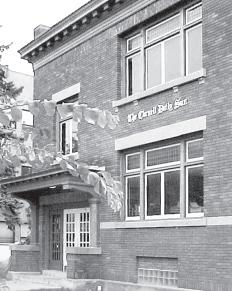
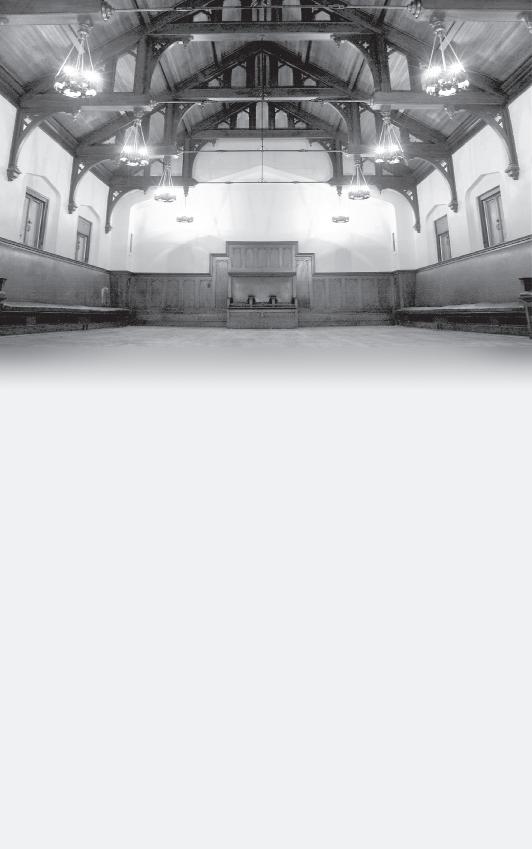
Carl P. Leubsdorf | Alumni Viewpoint
I Really Owe It All to The Sun
It was the first time I’d seen Cornell. Without the benefit of a campus visit, I had applied, been accepted, chose a double dorm room and selected my courses. But I had barely considered the possibility of actually going there until Harvard and Swarthmore inexplicably decided in August 1955 to keep me on their waiting lists.
So, when I first drove up the hill on a pleasant September day to my freshman home in a concrete barracks-like structure known then as University Hall 3, I had no idea what to expect. The only Cornellians I knew were a half-dozen fellow freshmen from my high school and an old camp friend from Louisville, Ky.
As it turned out, I had lucked out, though it took much of my first year to realize it. Going to Cornell was one of the most fortuitous developments of my life.
Academically, becoming a government major was an easy choice, once I saw the scope of courses and had my first contact with one of its stars, the late Prof. Clinton Rossiter. I was already a political junkie.
But the decision that really shaped my future came when I decided the following Spring to try out for The Sun. A few years earlier, I had written for and become editor of my weekly camp newspaper. I also wrote sporadically for my high school paper. But I never thought of becoming a journalist until I started writing for The Sun and quickly realized this was a lot more interesting than my initial goal of becoming a tax lawyer. (Why a tax lawyer? Arithmetic was always my best subject in school, and English one of my worst.)
I loved the enthusiasm of my compet managers, as they were called then: the late Marsha Roberts Senz and David Engel, the latter to become editor-in-chief and a lifelong friend. And I especially loved the nights spent in the rickety old Sun office, upstairs at 109 East State Street, editing copy, writing headlines and schmoozing over dinner with my colleagues at one of our two regular spots, the Normandie across the street and the College Spa down the block.
I also liked getting to know Cornell’s vast and beautiful campus, covering stories and seeing my byline in the next morning’s paper (though my initial assignment was a deadly dull speech by a visiting economics professor). I was shy then, believe it or not, and having to deal with unknown people and situations helped me overcome it.
I soon discovered that The Sun also enabled me to pursue my interest in politics by writing occasional columns.
My role model was James Reston, the famed Washington columnist for The New York Times, who combined deft political analysis with an ability to convey the tone of life in Washington, a skill I envy to this day.
It’s easy to see now how these factors, academic and journalistic, combined to form my goal of becoming a political columnist. I soon became a regular night editor, putting out the next morning’s paper; and later, a member of the Editorial Board; a regular proofreader (nights spent among the characters on the Ithaca Journal’s night crew), and finally, in my senior year, Associate Editor in charge of the editorial page.
David, managing editor Bob Malina and I had barely settled in when the campus exploded, climaxing two years of student unrest over the administration’s misguided effort to tighten strict social rules after a particularly out-of-control party weekend. The Sun led the resistance in what, looking back, was a precursor of the broader students’ rights and antiwar movements of the 1960s. But what triggered the explosion that attracted national headlines was Prof. Theresa Humphreyville’s attempt to justify banning women students from “apartment parties,” meaning unchaperoned access to off-campus apartments. The “apartment situation is conducive to petting and intercourse,” she told the Student Council. A relatively peaceful daytime rally morphed into a less peaceful nighttime one, climaxed by a post-midnight march on President Deane W. Malott’s Cayuga Heights house. “Cornell students riot for sex,” one headline read. Some of our colleagues were displeased when we editorialized that the demonstrations “did more harm than good.”
Senior year was more peaceful, as a vice president for student affairs, John Summerskill, eased the restrictive effort. Soon, it was time to graduate. “It all seemed so hectic,” David Engel mused one night, “and now it’s over.” But for me, what started at Cornell is still not over, 65 years later. I couldn’t have planned it better. My first job, with The Associated Press, brought me to Washington; my second one, with The Baltimore Sun, enabled me to become a White House correspondent; and my third, 29 years as Washington Bureau chief of The Dallas Morning News, brought the column I had long sought, which I am still writing 43 years later.
And I really owe it all to Cornell— and to The Cornell Daily Sun.
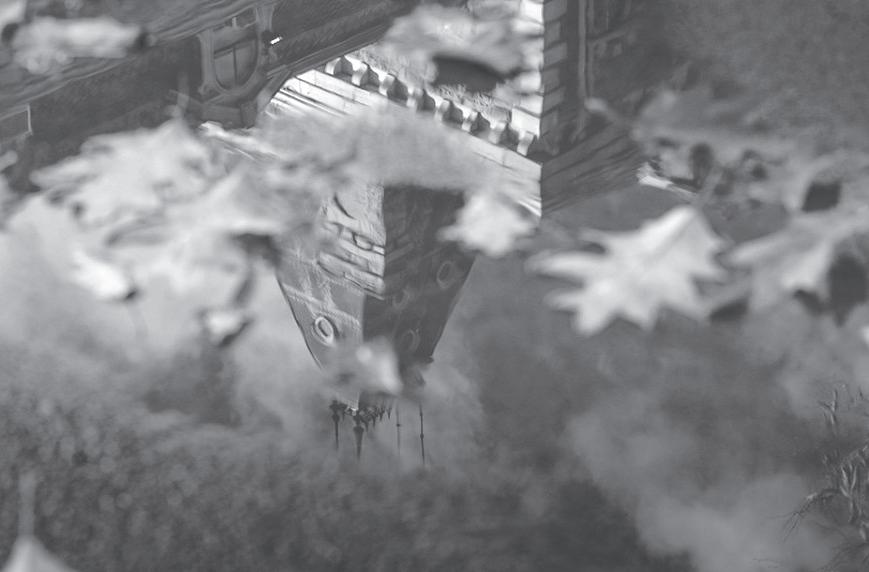
A Moment for Reflection
Every time I walk into The Sun’s downtown office, I am greeted by the words of Kurt Vonnegut Jr. ’44.
A plaque on our fireplace reads: “The Cornell Sun, thank goodness, showed me what to do with my life, and I did it.”
Vonnegut served as assistant managing editor and associate editor of The Sun before becoming one of the most prolific novelists of the 20th century.
Whether you are one or 50 years removed from your life on the Hill, Vonnegut’s words serve as a reminder of Cornell’s influences on your life.
Vonnegut’s assertion may directly echo your time on the Hill — serving on the Student Assembly may have informed a career in government, researching in a lab may have struck your interest in pursuing a Ph.D. or collaborating on a project team may have inspired your engineering path.
However, for the many alumni who pivot from their undergraduate involvement, Vonnegut’s words may instead point to Cornell’s influence on other facets of your life. Perhaps you met your spouse on the Hill, or the friend who introduced you to your spouse. Maybe a dance or a capella club did not lend itself to a career in choreography or singing, but brought you a supportive community that you seek in each new place you live in. Or perhaps you still consider a helpful professor’s advice at moments of indecision.
Whatever it may be, reunion serves as a moment for reflection. As you pass by McGraw Tower and Collegetown Bagels and you cross gorges and lakes, think about all of the ways Vonnegut’s words ring true. Consider the small and large impacts of being a member of the Red.
— Julia Senzon 908-672-3047
Today’s Campus Protests Stir Old Memories for This Sunnie
When I read [last] spring about the protests at Cornell over Israel’s war in Gaza, I was reminded of a protest I covered in April 1978, when I was a junior and the newly elected editor-in-chief of The Sun. I still have the bound volume of issues from that semester. Re-reading The Sun’s coverage of the protests and my editorials about them got me upset all over again. Campus protests aren’t light theater. There is pain, anger and confusion.
WScott Jaschik | Alumni Viewpoint
Are We Moving Backwards?
hen asked to reflect on how The Sun, journalism and Cornell have changed over the last 40 years, I find myself worried, very worried, about the future.
During the spring of my senior year, the big issue on campus was divestment from stocks in companies that did business in South Africa. Hundreds of students protested, and some were arrested in Day Hall. At The Sun, we covered the protests and debated whether working journalists (our fellow students) could participate.
Cornell administrators at the time argued that values of “institutional neutrality” prevented Cornell from divesting. Today, Cornell is considering restoring institutional neutrality as an official policy.
While the protests weren’t successful in the short term, Cornell ultimately did divest. And the government of South Africa changed. So was this a victory?
I couldn’t help but think of the divestment battles with the recent news that the Trump administration had admitted a group of white South Africans under a program for refugees. At the same time, the administration has excluded just about everyone else from the program, including refugees from Afghanistan who risked their lives to help Americans in the country.
So what had seemed to be a victory so many years ago now seems less so.
The divestment protests of 1985 were also notable for its diversity: students from every racial and ethnic group, together.
Today, Cornell is enrolling fewer American Indian, Black and Latino students than before a 2023 Supreme Court decision barred all colleges and universities from considering race in admissions. While we should all celebrate the surge in Asian American enrollment (which in part predated the Supreme Court ruling), the other numbers are deeply concerning. What is Cornell doing?
And more broadly, what can Cornell do?
The Trump administration had demanded that colleges and universities go beyond what the Supreme Court said and to eliminate all diversity, equity and inclusion programs.
And then there is Trump’s war against Cornell itself. The administration has halted research by Cornell professors — which they won in highly competitive programs — worth up to $1 billion. Most of the research is science, and much of it is far removed from the DEI debates. Still, it has been halted. The amounts of money involved totally dwarf the gifts and grants that were big news 40 years ago.
These issues may not be expected for a reunion. I hope those in attendance can still celebrate Cornell and all of its accomplishments. But I hope those in attendance will also spend at least some time on these and other issues.
Scott Jaschik, who is retired, was for 20 years a founder and editor of Inside Higher Ed. He is chair of the board of The Cornell Daily Sun.
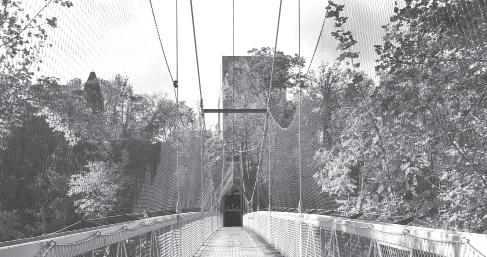
The trigger for the protests was an interview that Stuart Berman, the managing editor, and I did with Robert W. Purcell ’32, then outgoing as chairman of the Board of Trustees. Purcell, who was a financial adviser to the Rockefeller family, said he was thinking of redirecting the income from a $1 million gift he had given to Cornell so all of it would go to minority scholarships and none to the Africana Studies and Research Center, which he thought could or should be disbanded. Purcell told us, “The real solution to … the black situation … is a greater degree of integration of the black community into the white man’s world.”
Stuart and I realized this was explosive material. Stuart wrote up the interview for the edition of Friday, March 31, and ran it at the top of the front page, above the masthead, to signal its importance. Day Hall realized it was explosive, too. By the Monday edition,
“How far protestors should go to achieve what they think is right has been a recurring question at Cornell.”
Peter Coy ’79
Cornell’s provost, David Knapp, was telling The Sun that the University would replace any funding for the Africana Studies and Research Center that Purcell stopped providing.
A week later, on April 10, James Turner, the founding director of the Africana Studies and Research Center, spoke in front of the Straight and condemned what he called Purcell’s “careless, reckless, unfounded statements.”
The next day, about 40 students gathered at Ujamaa, a residential college celebrating Black heritage. They marched to Day Hall and then to the Johnson Art Museum, where Rhodes and key trustees were meeting to discuss the university’s investment policies. By that time there were about 200 protesters. They had multiple objectives, including to defend the Africana Studies and Research Center, to get Cornell to divest from South Africa and to protect COSEP, which was designed to increase African-American enrollment at Cornell.
At the museum, things started getting crazy. Seemingly spontaneously, the students forcibly detained Rhodes and the trustees inside. After a while, some of their leaders urged them to lift the blockade, but the rank-and-file felt otherwise.
The blockade ended up lasting 90 minutes. When Rhodes and Charles Stewart, the chairman of the trustee
Executive Committee, tried to leave, “they were pushed back by protesters and a short shoving match ensued between Rhodes, Stewart, safety officers, and the students,” The Sun reported the next day. Toward the end of the blockade, as things were beginning to calm down, Turner accused Rhodes of pushing him. “’I’m not pushing you,’ Rhodes hotly replied,” according to The Sun’s account.
“I think universities should be held to a high moral standard, but I also think that the right thing to do is not always clear and unambiguous.”
Peter Coy ’79
“Demonstrators Detain Trustees” was the banner headline. At the bottom of the page we ran a photo of Rhodes and Turner. Rhodes, a bit disheveled, appears to be trying unsuccessfully to force a smile and is starting to reach for a handshake. Turner, impassive, has his hands on his hips, not yet extending his own hand. Behind Turner and to his right in the photo stand I, with a troubled look on my face. I was hard to crop out of the photo, I guess. I wasn’t good at conflict. I was a reformer, not a fighter. My discomfort with what had gone down showed through in the editorials I wrote for the next three issues of The Sun. “We call on everyone involved to take time out to think and cool off,” I wrote in the first. The next day I parceled out blame: the protesters for the blockade, the trustees for initially blowing off the protesters, and Rhodes, who I said “did much to lose his reputation as an unflappable Britisher who handles crises well.” The day after that I defended the Africana Studies and Research Center and reiterated The Sun’s support for divestment from apartheid South Africa, but ended by saying that the museum blockade “created an atmosphere of ill will” that could put the protesters’ goals “further from reach.”
Looking back on those anguished editorials 46 years later, I see that I took the easy way out by calling the museum blockade counterproductive. The more interesting question is what if it was productive, in the sense of achieving the protesters’ goals. Would I have supported it then? I think I’d still say no because I still almost instinctively oppose the use of force for political purposes, even though I think the protesters were on the right side of history. How far protesters should go to achieve what they think is right has been a recurring question at Cornell, from the Straight takeover of 1969 (and before) down to this past semester. I still think universities should be held to a high moral standard, but I also still think that the right thing to do is not always clear and unambiguous. Bertrand Russell once said, “I would never die for my beliefs because I might be wrong.” I think he was right about that. Although I might be wrong.
Peter
‘Cornellians Are Everywhere’: Tony Chen ’12 Brings Alumni Together With Over 33K LinkedIn Followers
By JANE HAVILAND Sun Features Editor
This story was originally published on January 11.
From participating in an alumni knitting club to organizing worldwide Cornell Club Zoom mixers reaching hundreds of Cornellians at a time, Tony Chen ’12 has made it his mission to help the Cornell alumni network flourish.
With a goal of “Cornell #1 by 2050!!” — according to Chen’s LinkedIn headline — Chen organizes hundreds of Cornell alumni gatherings each year, with an outreach spanning over 33,000 followers. He welcomes individuals to his account with the bio: “I’m trying to meet every Cornellian, and connect everyone with each other.”
Time on the Hill
Before Chen rose to Cornell fame, he began his collegiate experience at the College of Engineering in 2008.
Chen recalls his undergraduate experience at Cornell with happiness. He said he loved living in Risley Hall throughout his junior and senior years, appreciating the arts focus cultivated by students in the residence hall.
Even though he was an engineering student, Chen enjoyed the opportunity to dabble in the arts and meet people with various passions by living in Risley.
“That is the good thing about Cornell,” Chen said. “You get to meet all kinds of people.”
Chen was also a member of the Cornell Speech and Debate Program and a part of the Cornell Running Club and conducted research with the sociology department as an undergraduate. After graduating with a degree in applied physics and a minor in law and society and starting his career in software, Chen immersed himself in the alumni sphere.
Spreading the ‘Cornell Spirit Like Johnny Appleseed’
One of the first alumni experiences Chen was involved in was with Cornell Cares — a volunteer event held twice a year in which alumni ranging all over the globe participate in community-based volunteering. Chen recalled his experience volunteering at a New Jersey food bank, a parking lot cleanup and diaper banks.
Chen quickly became a member of the Cornell Club of Washington post-graduation, attending events like the young alumni holiday party and the mid-Atlantic crab feast. He assumed leadership roles in CCW within a few short years. As the director, Chen organized monthly restaurant meetings with members, a knitting club and a run club.
Chen credits CCW for teaching him how to market events and connect with others.
“There’s all kinds of leadership roles. I always tell people ‘You’ve got to volunteer with the local club,’ because you get to build up all of these skills,” Chen said.
Before the COVID-19 pandemic began, both groups Chen was involved in had many events planned, all to be scrapped in 2020 shutdowns. The Cornell Alumni Affairs team began to connect various Cornell Clubs, amid uncertainty on how to organize events with social distancing mandates in place.
Shortly following a mass Cornell Club Zoom call organized by Alumni Affairs, Chen was connected with Cornellians from all over the world and began organizing weekly Zoom meetings to solve The New York Times’ daily crossword puzzle, knit and converse from miles away.
These Zoom meetings were coined Cornell Global Mixers by Chen, and still occur today. Chen explained that at the height of the pandemic, “the biggest one we had was 422 Cornellians.”
Amid the rise of the COVID-19 pandemic, the Cornell Asian Alumni Association reached
out to Chen in regards to boosting attendance at events and participation within the association. When pandemic shutdowns decreased, Chen not only attended the Cornell Asian Alumni Association’s Ithaca and New York City events but also traveled to Europe and Asia to support this alumni network.
“Our alumni and alumni groups have never had this kind of exposure,” wrote Matt Palumbo ’83, president emeritus of Cornell Asian Alumni Association, in an email to The Sun. “Tony Chen plants and spreads the Cornell spirit like Johnny Appleseed.”
Chen was also introduced to the Continuous Reunion Club, which encourages alumni to attend a Cornell reunion every year. He serves as membership chair and utilizes his unique talents
to link Cornellians of similar interests together.
“We are a group always open to learning about Cornell and its incredible diversity, and Tony fits in perfectly,” wrote Melinda Dower ’78, CRC Reunion Chair, in an email to The Sun.
Chen highlighted opportunities for current students and alumni alike in each alumni network he is involved in.
“If you’re a current student, I highly recommend being a reunion clerk. It’s an amazing way to meet alumni,” Chen said.
Jane Haviland can be reached at jhaviland@cornellsun.com.

Tree Sisters, Two Sports, One Campus: Meet Te Dwyers
This story was originally published on January 10.
At Cornell, it is not uncommon to meet a pair of siblings. You may even know someone whose parent or other relative attended. But a case of three student-athlete sisters playing at the same Division I school in the same academic year? That is truly one in a million.
Meet Lucy Dwyer ’25, Grace Dwyer ’26 and Rose Dwyer ’28 — all proud Cornell athletes and sisters. Hailing from Wynnewood, Pennsylvania, Grace and Rose are both defenders on the women’s hockey team while Lucy plays attack for the women’s lacrosse team.
The Road to Cornell
The Dwyers come from a history of both athletic and academic excellence. Their father, Tom Dwyer, played ice hockey and lacrosse for Brown University and their mother, Lynn Dwyer, played field hockey and lacrosse at Harvard University. The sisters said that their parents met through lacrosse after college.
“Sports have always been a bond for us as a family and they are something we have always been committed to,” Rose said. “It is our happy place.”
The sisters grew up with sports. From skating on the ice together to playing small, competitive games of hockey, lacrosse or field hockey, the Dwyers were united by athletics.
While the sisters’ upbringing was largely centered around sports, their love for athletics developed intrinsically.
“[Our parents] never really forced us into sports, we just really enjoyed and valued them,” Grace said. “We knew that our parents were going to support us in anything we did.”
The sisters continued to find themselves playing on the same field as they grew up. During Grace’s freshman year of high school, she played lacrosse with then-junior Lucy, winning a state championship. Later that year, Grace and Lucy also played field hockey together.
A couple of years later, Grace competed with her young-
er sister. Rose and Grace played soccer together in high school and trained together on the ice, but Cornell marks their first opportunity to play ice hockey on the same team due to their different birth years.
After years of dedication and competition on the field and on the ice, the decision to continue their sports after school was an easy one. The sisters attributed the positive experiences their parents had playing college sports to their decision to make the jump to the collegiate level.
“We never got the opportunity to see our parents playing college sports but we saw how they had their best friends, great relationships and the lessons they learned carry into their parenting and work, so [we realized] it was important to play sports,” Lucy said.
In June of 2019, Lucy committed to play lacrosse at Cornell.
“I wanted a school where I could get the best opportunities from an elite university and lacrosse program,” Lucy said. “I loved the place and people when I visited.”
Grace landed on Cornell because of the positive culture –– and, of course, her sister.
“I felt like the ice hockey team was very connected to each other and to the coach. … Lucy already being committed there felt like a bonus,” Grace said.
Watching her sisters playing college sports at Cornell, Rose started to get to know the campus and when she officially visited, the coaches and team were a huge selling point to her.
“Cornell felt right and like home when I visited, so being able to play with Grace for two years on the same team was a bonus,” Rose said.
Tackling College Life Together
Now together at Cornell, the sisters feel more connected to each other than ever. Together, the sisters work on strength and conditioning, speed and off-ice training and enjoy getting lunch or dinner together.
“We try to find pockets of time in between our busy schedules to hang out together,” Grace said.
Lucy studies biology & society in the College of Arts and
Sciences. Grace is a part of the Dyson School of Applied Economics studying entrepreneurship and strategy. Rose is studying communication in the College of Agriculture and Life Sciences.
This past semester, Lucy and Rose took an oceanography course, studying together outside of class.
To continue reading this article, please visit www.cornellsun.
Faraj can be reached at zfaraj@cornellsun.com.
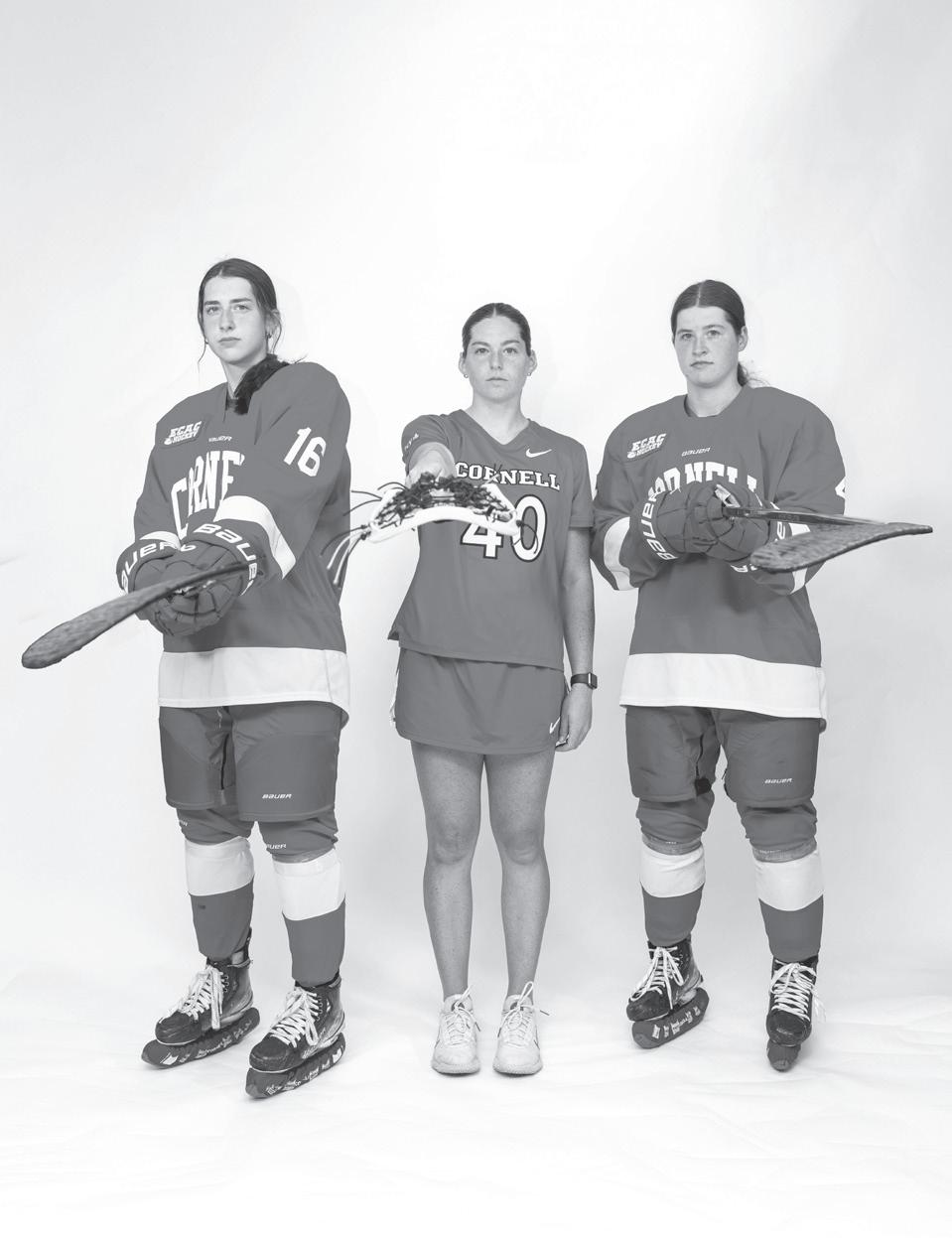
SUNBURSTS: Dragon Day
First-year architecture students celebrated Dragon Day, an annual tradition, the day before Spring Break.
By SUN PHOTOGRAPHY DEPARTMENT
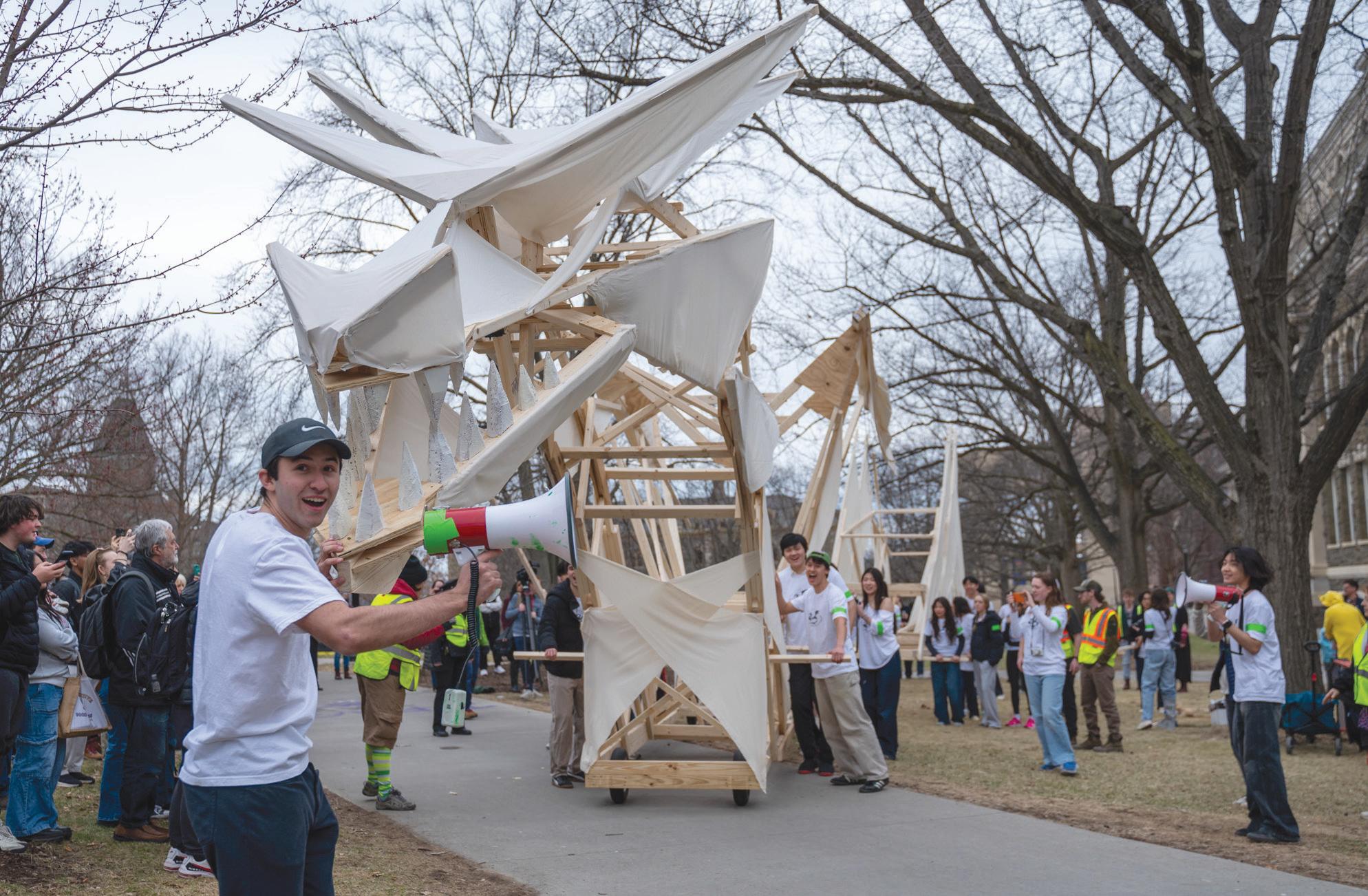
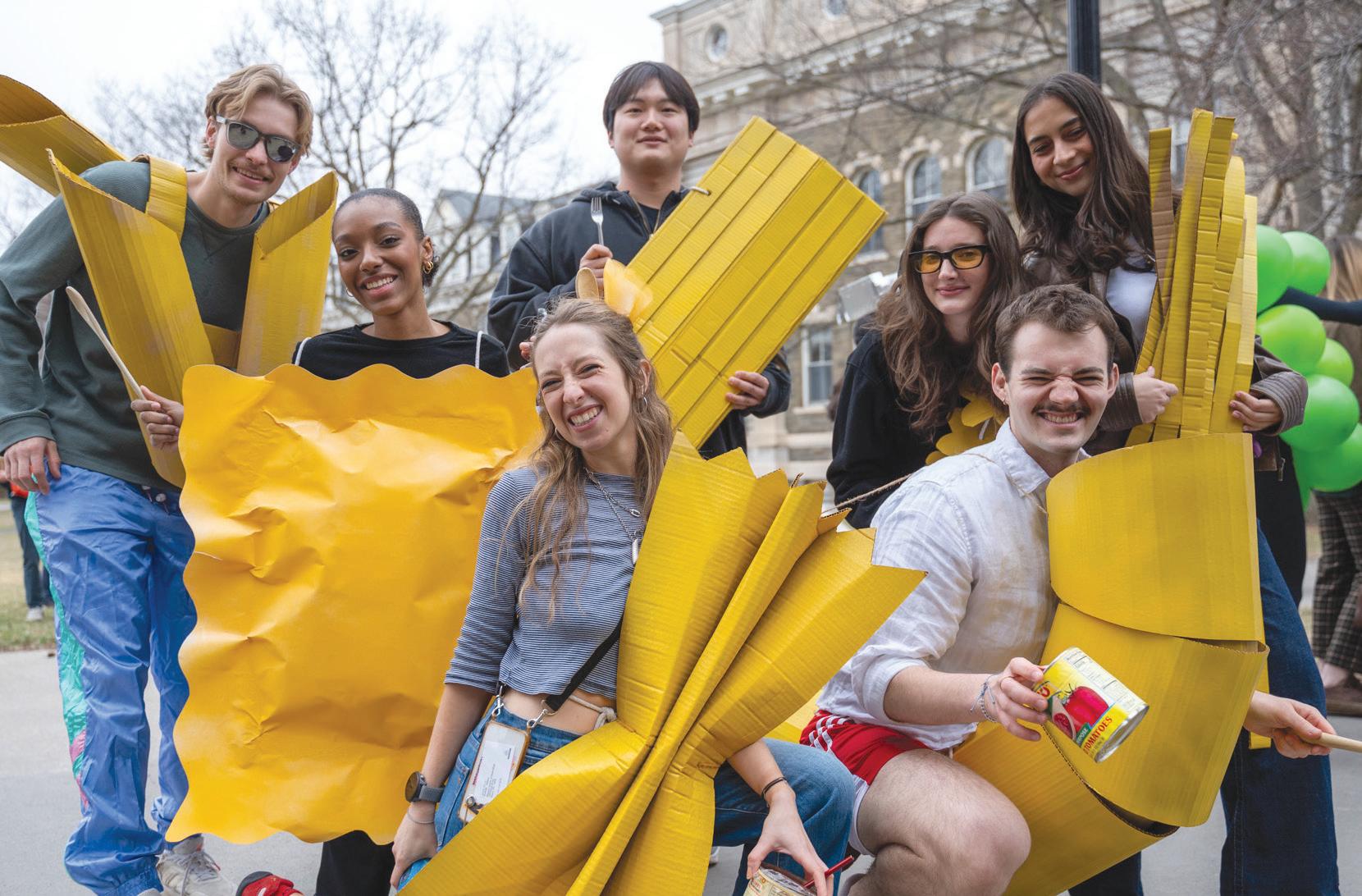
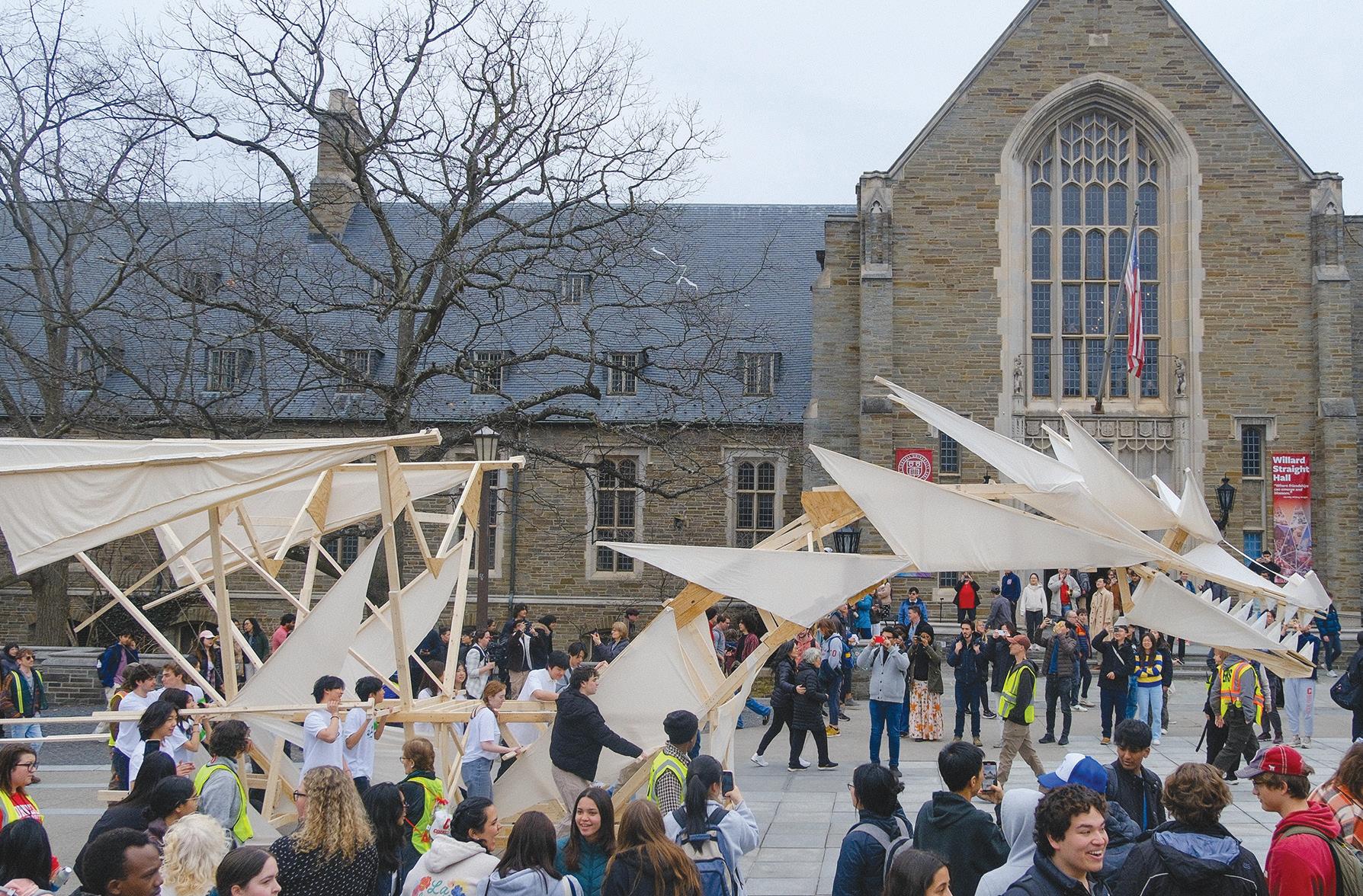
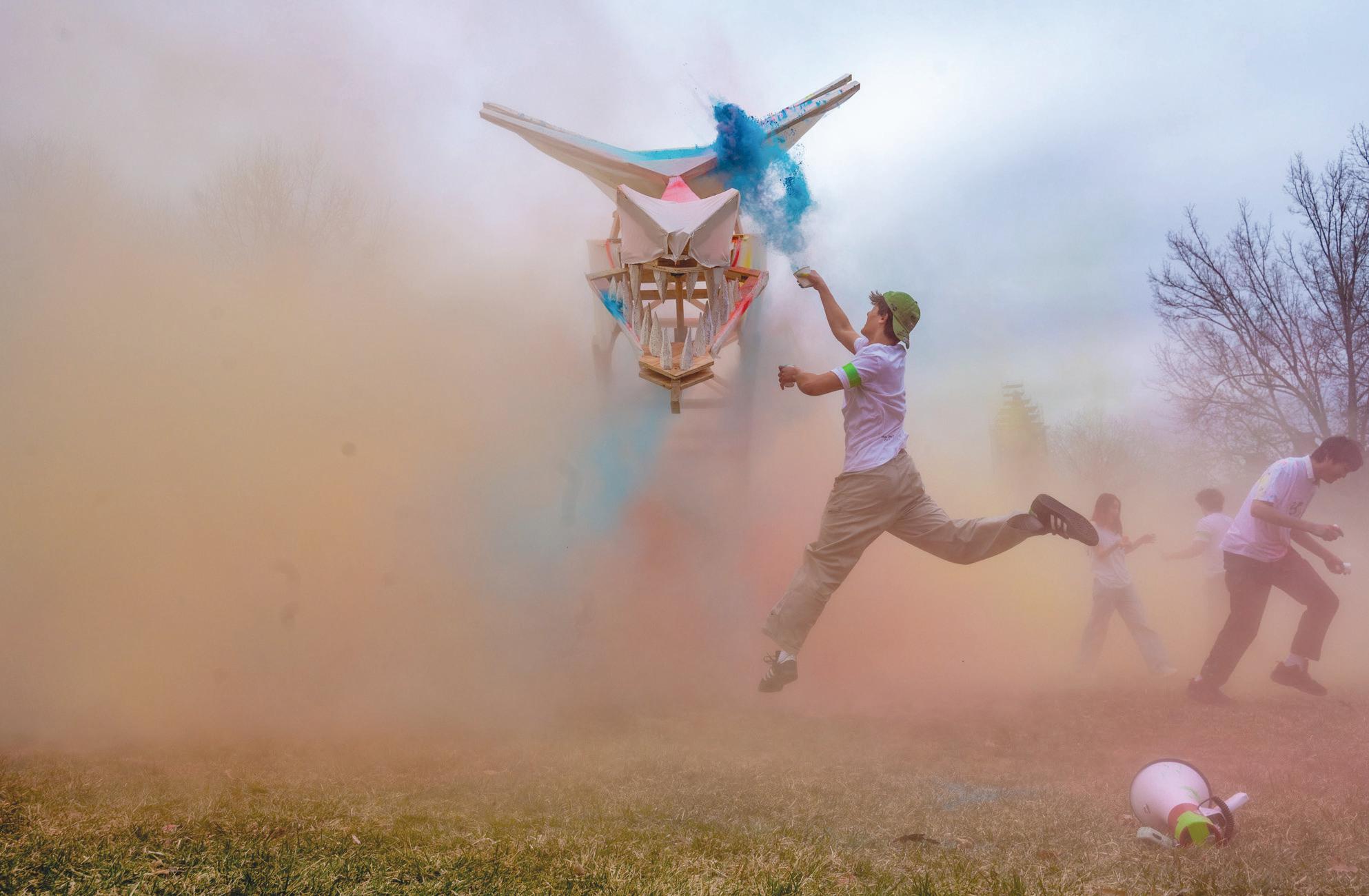
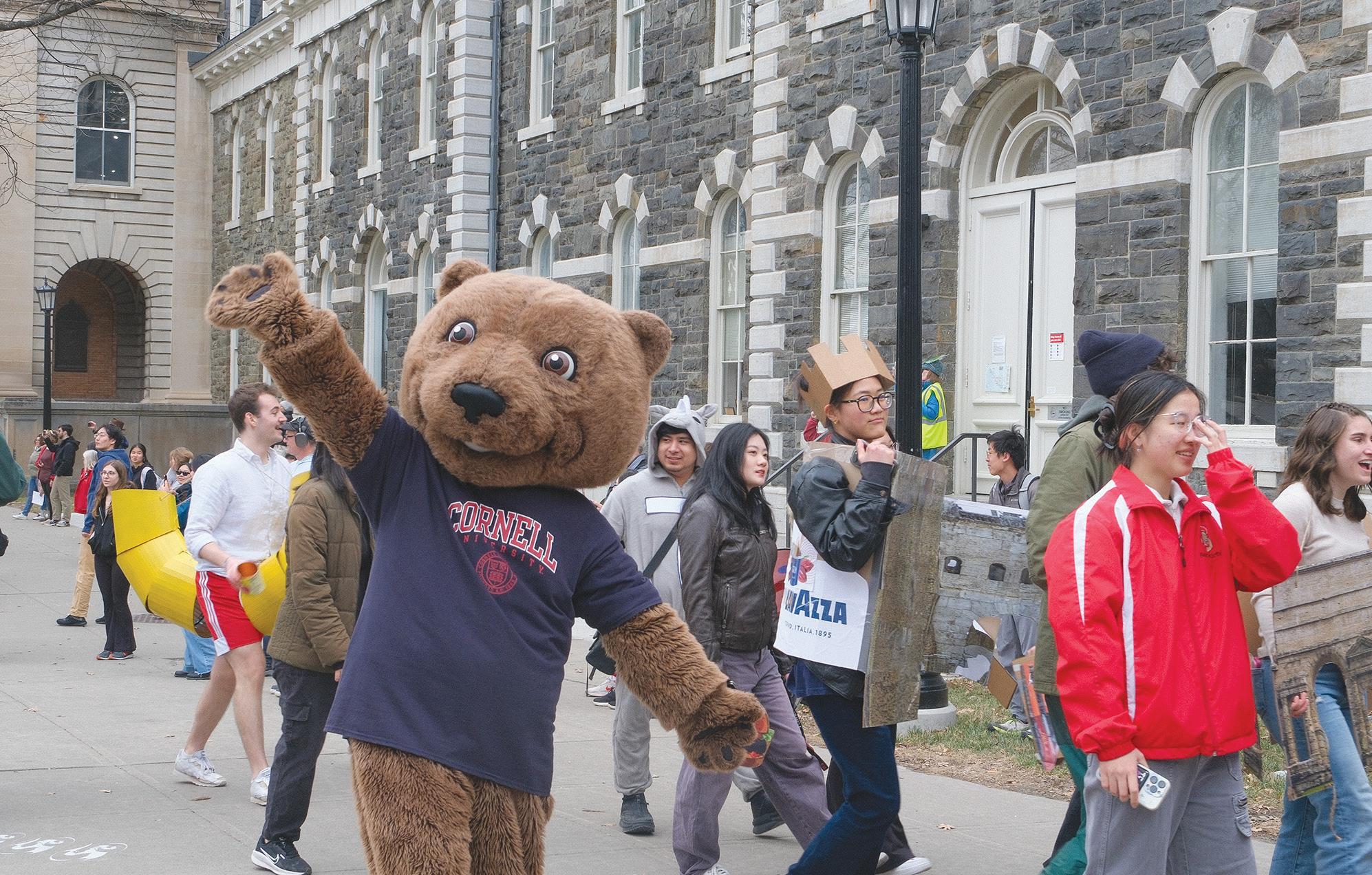
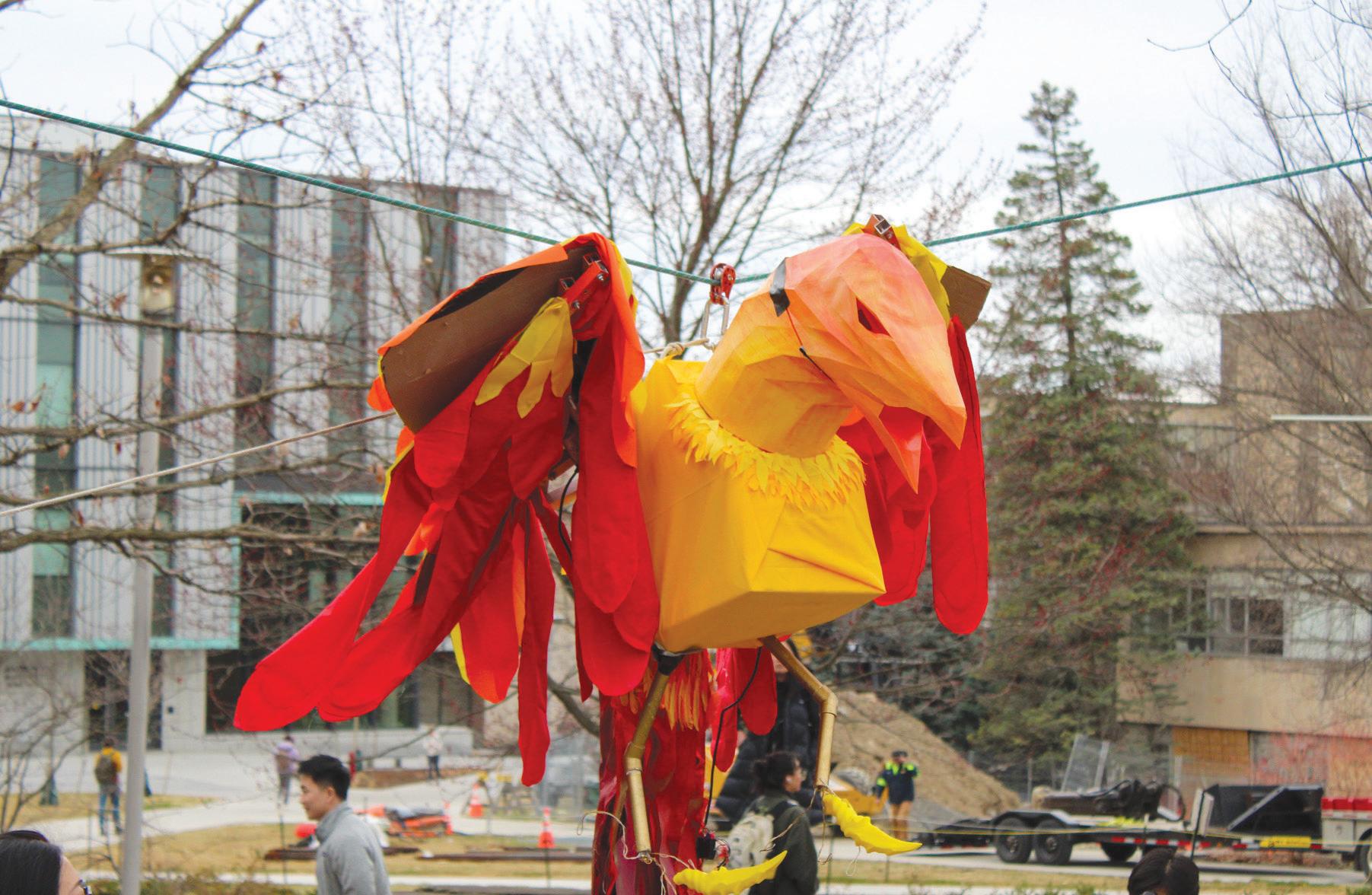
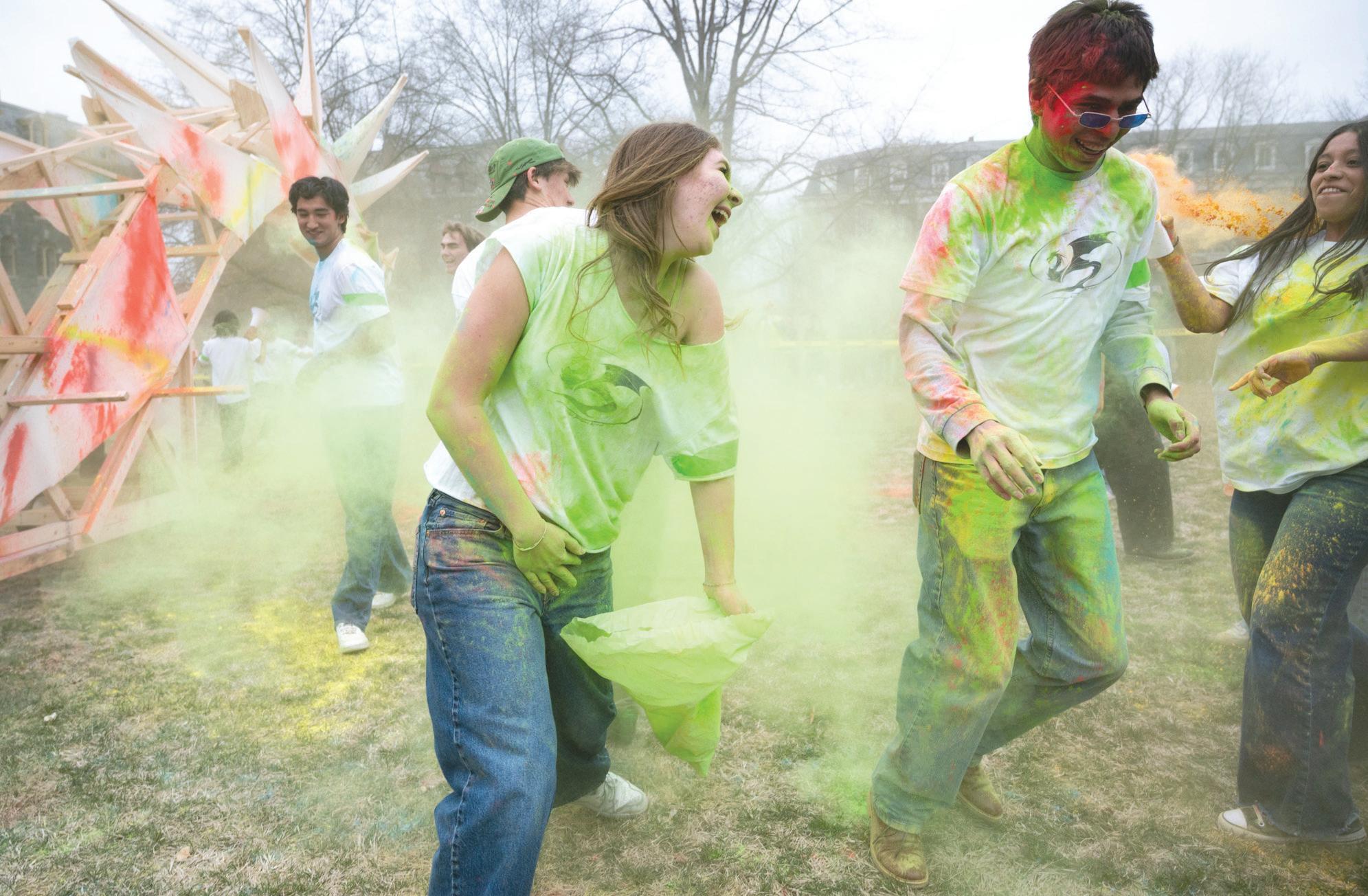
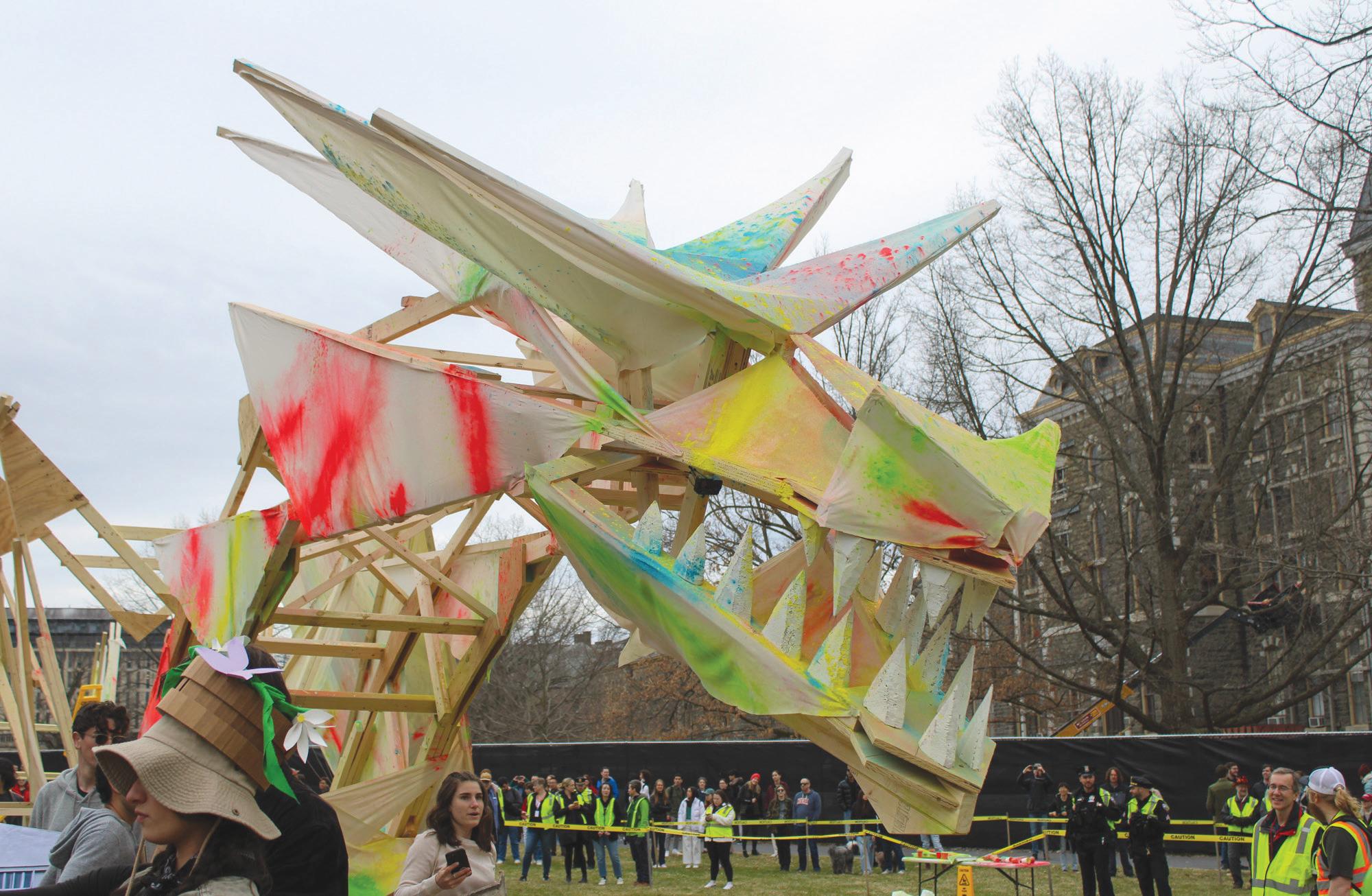
Back-to-Back:
Men’s
Hockey Wins 2025 ECAC Title
Schafer led the team in an ultimate come-back in his last season as head coach
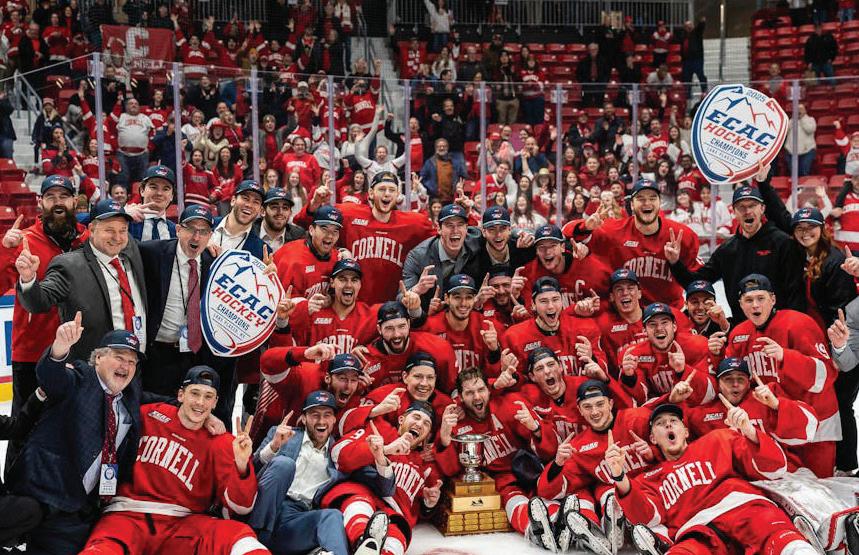
By JANE McNALLY Sun Sports Editor
This story was originally published on March 22.
LAKE PLACID, N.Y. — “We didn’t get to do this last time,” said head coach Mike Schafer ’86, Whitelaw Cup in hand, gesturing associate head coach Casey Jones ’90 closer.
Minutes before, Cornell clinched its second consecutive ECAC tournament championship — the final one for Schafer in his final season before retirement, and the 14th in program history. Schafer has helped the Red secure seven of those.
“Started [coaching] 30 years ago [at] 31 years old. Won my first two, and I win my last two,” Schafer said.
That “last time” was in 2019, when Jones coached Clarkson to a Whitelaw Cup win over Cornell on the same stage. Jones and Schafer were on opposite benches.
On Saturday, they got to pose with the Whitelaw Cup together.
“He beat me last time,” Schafer said. “So it’s nice to celebrate with each other.”
Men’s hockey has gone back-to-back — the Red defeated Clarkson, 3-1, in the ECAC title game on Saturday. It is the Red’s second-straight title after last year’s win against St. Lawrence, making them the first ECAC team to go backto-back since Union did it in 2014.
Senior forward Ondrej Psenicka had three points, while junior forward Nick DeSantis posted a two-point game. Senior goaltender Ian Shane stole the show, winning ECAC Tournament Most Valuable Player with his 30 saves, many of them highlight-reel stops down the stretch to clinch the title.
For Schafer, his 30 years of coaching
in the ECAC have culminated in one final Whitelaw Cup.
“I’m just really grateful for the sport of hockey, what it’s given to myself, my family here. We always ask the question, ‘what’s the thing you’re going to miss the most?’” Schafer said. “Being in the locker room, talking to guys, watching them overcome their individual adversity over the last year and a half. It doesn’t get any better than that as a coach.”
Clarkson, boasting the ECAC Coach of the Year, Goaltender of the Year and Player of the Year in J.F. Houle, Ethan Langenegger and Ayrton Martino, respectively, could not overcome an early first-period jolt by Cornell.
Just a couple of weeks earlier, Langenegger took the ECAC Goaltender of the Year crown from the 2024 winner at the other end of the ice, Shane. The start for Langenegger was one that few expected — allowing goals on two of the first three shots he faced.
Senior forward Ondrej Psenicka finished off what was a highlight-reel passing play for Cornell just 5:11 into the championship game. Junior forward Nick DeSantis tossed a pass to sophomore forward Jonathan Castagna, who dished a feed from behind the net right to Psenicka, roofing the puck past Langenegger for his eighth goal of the season and a 1-0 Cornell lead on just its second shot.
Two minutes later, that lead was doubled. Senior forward Kyle Kovich forced a turnover and emerged on a two-on-one rush — reminiscent of the one he had scored on shorthanded in the late stages of Friday night’s overtime thriller. Kovich shot that puck on Friday but opted to pass it on Saturday, cueing up DeSantis for a perfect one-timer that sailed past Langenegger.
“I knew I had to be better [than Friday night] for the team, and just to
come out hot like that at the start was huge,” said DeSantis, who had an assist in addition to his goal.
The Red cooled off after its blistering start, eventually taking a penalty with 8:10 left in the period. The Cornell penalty killers were up for the task despite a few threatening chances from Clarkson.
A second-period kill for Clarkson seemed to ignite something from within, as the Golden Knights took over the latter half of the period. The onslaught ultimately culminated in the halving of Cornell’s lead. Off a Shane rebound, Erik Bargholtz stuffed one home to give Clarkson its long-awaited score with 6:36 left in the period.
“Started [coaching] 30 years ago [at] 31 years old. Won my first two [ECAC tournament championship titles], and I win my last two.”
Head coach Mike Schafer ’86
From there, Cornell was playing to survive. The Red was pinned deep in its offensive zone, scrambling to escape the period with a lead. Cornell took a penalty with 1:40 left, and Clarkson went on to ring the post for a second time, but Cornell ultimately escaped with a slim 2-1 lead heading into the final frame.
Clarkson out-attempted the Red 25-16 in the second period. In the game, it was a 31-24 advantage in shots on goal for Clarkson, a stark contrast from Clarkson’s 3-1 win over the Red on Feb. 21, where the Golden Knights mustered just 11 shots on goal all night.
The Red killed off the final 20 seconds on Stanley’s penalty, then got to
work in the third. Langenegger made a pair of impressive glove saves on freshman forward Charlie Major and sophomore defenseman George Fegaras, respectively, before Clarkson took a cross checking penalty just over five minutes into the period.
But another successful Golden Knight kill kept it a one-goal game. The player who took over the game was Shane, making multiple stops under high pressure to preserve the fragile lead.
Clarkson pulled Langenegger with 2:39 left, but sophomore forward Ryan Walsh would find the empty net and ice the game — the same 3-1 result the Red delivered to St. Lawrence in last year’s final.
“I just have a lot of gratitude, and that’s all I’ve been thinking about,” Schafer said.
With the win, Cornell has punched its ticket to the NCAA tournament. It will look to take its next step to the Frozen Four, a place Schafer has been just once as a coach.
“I think there’s always a stepping stone to get to the Frozen Four. You have to suffer a little bit of loss,” Schafer said. “You get close to where we were last year against Denver, and it’s even more painful, but it’s even more experience. And then there’s that next step.” Cornell, perhaps the hottest team in the country, will await its fate for the national tournament. The NCAA tournament selection show will take place at 3 p.m. Sunday and will deal Cornell its opponent for next weekend’s first round.
“I’m very grateful for this season,” Schafer said. “And it’s not over.”
Sports
Men’s Lacrosse Secures Ivy League Title
A 20-15 win over Princeton earned its frst championship since 2018
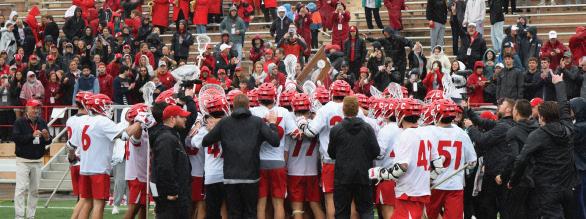
by John Piatelli ’22.
This story was originally published on May 4.
It’s not every day that the top two teams in the country have the chance to square off before the final dance.
In the Ivy League Championship on Sunday, No. 1 men’s lacrosse and No. 2 Princeton defended their statuses at the top of the polls with a dramatic back-andforth contest. The game was broadly considered a play-in for the top overall seed in the NCAA tournament, with Cornell and Princeton entering Sunday with the nation’s highest RPIs.
Earlier in the season, then-No. 4/3 Cornell hosted then-No. 6 Princeton for a thrilling Ivy League opener that saw the Red jump ahead to a 15-10 win. It was only fitting that the teams would come together one last time to end Ivy League play, with Cornell (13-1, 6-0 Ivy) running away with a 20-15 victory against Princeton (12-2, 5-1).
Not only was it a milestone for the team, but one player made his mark in the record books once again. During the first Princeton game, senior attackman CJ Kirst beat the school’s all-time scoring record. During the second, he broke the single-season scoring record of 66 goals set
“[Piatelli] was a guy I looked up to, a guy I idolized,” Kirst said. “Fortunately, he was able to be here this weekend, so I was able to talk to him. To have that success … is pretty cool and pretty special.”
The Red began the game with high energy, with senior midfielder Andrew Dalton scoring a flashy behind-the-back goal. Cornell then won the ball back on the ride and sophomore midfielder Ryan Waldman added on.
A couple of crucial saves from senior goalkeeper Wyatt Knust led to a goal by senior attackman Michael Long, and Long was followed by senior midfielder Hugh Kelleher to bring the Red to a 4-0 lead.
“Last year set the tone,” said head coach Connor Buczek ’15 MBA ’17. “Missing the dance, feeling like we had a good season. … If you let up and you’re playing a good team, they’re going to beat you.”
Princeton found its footing and made it onto the board with rapid-fire goals from Nate Kabiri and Chad Palumbo. A hit to the head by senior long stick midfielder Duke Reeder after Palumbo‘s goal gave the Tigers a two-minute non-releasable manup opportunity, which they quickly cashed in. Reeder has seen action in just four games this season but collected penalties in back-to-back games in the Ivy League tournament.
The Red killed off the remaining pen-
alty time but failed to settle back into its early-game momentum. Princeton’s Colin Burns buried the equalizing goal with a minute left in the opening quarter, sending the teams into the first break tied 4-4.
“Heading into the game, we knew it was going to be a 60-minute battle,” Kirst said. “We were prepared mentally to be down.”
It was Kirst who broke the Princeton run, putting the Red back on top. Senior midfielder Ryan Sheehan followed with a laser of a shot. Long then threaded a pass through the defense to junior midfielder Brian Luzzi, who scored, making it seven different goal scorers for Cornell’s first seven goals.
Princeton found a three-goal run of their own before Kirst answered, tying the Cornell single-season goal-scoring record. Princeton fired back with two goals before the half, sending Cornell into halftime behind for the first time since the Richmond game on March 2.
Princeton fired first after halftime, scoring three in the first two minutes of the second half to put them on top 12-8. Sophomore attackman Ryan Goldstein stopped the run and was followed by a bounce shot from Kelleher.
Princeton immediately nullified this run, scoring twice in ten seconds. Goldstein collected his third assist of the game on a Dalton goal, and Cornell found another
from sophomore midfielder Willem Firth on the man-up.
“It’s all about the next one,” Buczek said. “Doesn’t matter if you’re up five or down five, the next goal makes the situation a heck of a lot better.”
Kelleher completed his hat trick to cut the Princeton lead to one, ending the third quarter with a score of 14-13. It was Kelleher again to open the fourth and tie the game. Princeton then earned its own two-minute non-releasable penalty where Goldstein scored, bringing the Red into the lead.
Goldstein lost his defender behind the net and scored again for the hat trick. Then he fed Firth, who was followed by Kirst scoring twice, adding another accolade to his season by breaking the Cornell single-season goal-scoring record. He then assisted Long to cap off a 10-0 run for the Red.
“I don’t think there’s anyone in this lacrosse world more deserving of every accolade he’s getting, and I think there’s a ton more to come,” Long said.
Princeton got one last goal to boost morale before the game ended 20-15.
To continue reading this story, please visit www.cornellsun.com
William Cawley and Alexis Rogers can be reached at wcawley@cornellsun.com and arogers@cornellsun.com.
Meet the Sun’s Top 25 Senior Athletes of 2025
Aaron Liang- Men’s Squash
Adit Sinha- Men’s Tennis
CJ Kirst Rory Guilday
Male Senior Athlete of the Year Attackman CJ Kirst’s lacrosse career has been defined by the standards he’s set. He leads the country in goals per game (4.57), broke Cornell’s record for most goals in a season (66, he now has 68) and became the nation’s highest career scorer after netting his 225th goal on Senior Day.
Kirst was a Tewaaraton Award finalist in 2023, and he has been widely considered a shoo-in for the 2025 honor. He was the Ivy League Rookie of the Year in 2022, has been Ivy League Offensive Player of the Week six times in 2025 and was the Ivy League Attackman of the Year.
As well as being an individual standout, Kirst stood at the helm of a team which achieved first place in media polls midway through the season and has not relinquished the position since. The Red won both the regular season and tournament championship titles in the Ivy League.
Alioune Ka- Men’s Soccer
Allie Danko- Women’s Swim & Dive
Ashley Messier- Women’s Ice Hockey
Augustine Haquet- Women’s Track & Field
Ava Ramachandran- Women’s Polo
Caitlin Slaminko- Women’s Lacrosse
Chris Foca- Wrestling
CJ Kirst- Men’s Lacrosse
Claire Wolfe- Field Hockey
Damian Hackett- Men’s Track & Field
Gabbie Rud- Women’s Ice Hockey
Ian Shane- Men’s Ice Hockey
Jameson Wang- Football
Joseph Gurski- Men’s Swim and Dive
Julian Ramirez- Wrestling
Kyle Howe- Men’s Heavyweight Rowing
Laken Gallman- Women’s Soccer
Nazir Williams- Men’s Basketball
Ondrej Psenicka- Men’s Ice Hockey
Rory Guilday- Women’s Ice Hockey
Summer Parker-Hall- Women’s Basketball
Sydney Beers- Gymnastics
Tim Rego- Men’s Ice Hockey
Female Senior Athlete of the Year
Since her freshman year, defender Rory Guilday has been a rock-solid presence on Cornell’s blueline, using her 5’ 11” frame and elite defensive discipline to terrorize forwards across the ECAC.
Averaging over 50 blocks a season in her three full years on the ice, the Minnesota native was named to multiple All-Ivy League teams and to an All-ECAC third team. Guilday’s consistent defense, emblematic of head coach Doug Derraugh’s ’91 structured approach, guided Cornell to the 2025 Frozen Four and the program’s first ECAC championship since 2014.
In 2022, Guilday made her international debut and has gone on to play in multiple tournaments for Team USA. Guilday is projected to hear her name called in the opening rounds of the PWHL draft and is also a strong candidate for the 2026 U.S. Olympic team.
